Plant Descriptions – Uromyrtus australis – Uvaria concave
Uromyrtus australis
Uromyrtus lamingtonensis
Uromyrtus lamingtonensis
Urtica incisa
Utricularia aurea
Utricularia australis
Utricularia biloba
Utricularia caerulea
Utricularia dichotoma
Utricularia gibba
Utricularia lateriflora
Utricularia uliginosa
Utricularia uniflora
Uvaria concava
Uromyrtus australis
Classification:
Unranked: Eudicots
Class: Rosids
Order: Myrtales
Family: Myrtaceae
Genus: From Oura/Uratus, which are Ancient Greek for a tail and Myrtis, which is Ancient Greek or Myrtillus, which is Latin for the European Myrtus communins. It refers to plants, which resemble the Myrtle plant, which the Greeks considered a sacred plant to be given to the goddess Aphrodite because its powers encompassed love, beauty, desire, sex (uality), fertility and prosperity for women. It worked similarly for the Romans with their goddess Venus.
Specie: From Terra Australis, which is Latin for land of the south and Anum/Ensis, which is Latin for to originate from. It refers to plants, which were first discovered from the land down under.
Sub specie:
Common Name: Peach Myrtle or Australian Peach.
Distribution:
Uromyrtus australis is found south from the Nightcap Range in far north eastern New South Wales and on the western side of the Macpherson Ranges on the border with Queensland. This is a rare tree with fewer than 850 trees remaining in the wild.
https://avh.ala.org.au/occurrences/search?taxa=Uromyrtus+australis#tab_mapView
Habitat Aspect Climate:
Uromyrtus australis prefers dappled shade to full sun and is found growing in the mountains of warm well developed rainforests. The altitude ranges from 12 meters ASL to 660 meters ASL.
The temperatures range from 2 degrees in July to 32 degrees in January.
The rainfall ranges from lows of 1100mm to 2000mm average per annum.
Soil Requirements:
Uromyrtus australis prefers better quality light clays to medium clays with a high proportion of leaf litter. The soils are derived from decomposed black basalts. The soils pH ranges from 5pH to 7pH. It does not tolerate waterlogged soils however plants in riparian zones may be inundated for short periods during storms. Non saline soils to moderately saline soils are tolerated.
Height & Spread:
Wild Plants: 6m to 12m by 3m to 5m.
Characteristics:
Uromyrtus australis grows as a small tree often with a crooked, pale grey and brown, scabrous, scaly, flaky bark on the trunk. The branchlets are deep brown, scaly with longitudinal flaky strips turning deep red-brown and are covered in fine resinous lumps. The smallest stems are densely covered in silky white pubescent hairs.
The alternate, narrow ovate to elliptical leaves of Uromyrtus australis measure 20mm to 50mm in length by 6mm to 20mm in width. The petiole measures 2mm to 6mm in length. The bases are narrow cuneate to broad cuneate to rounded while the apex is narrowly acute to narrowly acuminate. The discolourous laminas are deep sea-green, semi glossy and glabrous on the upper lamina while the lower lamina is paler and dull. The leaf margins are entire, flat and recurve slightly upwards from the mid vein to the margins and decurve slightly near the apex. The mid veins are slightly prominent on the lower laminas and are faintly visible on the upper laminas. The new growth is glossy reddish-brown to glossy olive-red.
The inflorescences of Uromyrtus australis are born singularly or a few in loose clusters from the leaf axils. The grass-green pedicels are glabrous and measure 5mm to 10mm in length. The grass–green hypanthia are moderately covered in silky white pubescent hairs. The 5 orbicular, grass-green sepals are divaricate, glabrous and measure 1.4mm to 1.8mm in length by 1.4mm to 1.8mm in width. The white to rose pink or white streaked pink petals are almost orbicular to almost oblong and measure 4.5mm to 5.5mm in length by 3mm to 5mm in width.
The 5 short, stout stamens are free for their entire length but are so tightly grouped that they may appear to be united measure 1.4mm to 1.6mm in length. The filaments are white and while the anthers are pale yellow-fawn and curve inwards.
The slender white style tapers to the spherical stigma, is glabrous and measures 3.5mm to 5mm in length. Uromyrtus australis’s flowers appear from early November through to late December.
The fruits of Uromyrtus australis are globose berries. The berries are glabrous or sparsely covered in silky white puberulent hairs and measure 5mm to 8mm in length by 6mm to 10mm in diameter. The green capsules turn black, succulent and soft when ripe. The calyx lobes are persistent on the ripe fruit while the style is discarded as the fruits ripen. The glossy brown seeds are flattened and orbicular ellipsoidal. The fruits ripen between April and July.
Wildlife:
Uromyrtus australis’s flowers are attended by native bees including Tetragonula carbonaria and small beetles. I have not seen any birds or animals consume the fruits however I would suspect all the fruitigrove birds would eat the fruits.
I have not eaten the fruits so cannot comment first hand on the flavour but believe them to be sweet with a Eucalyptus flavour.
Cultivation:
Uromyrtus australis is a small tree that could be grown in association with other small rainforest species. It is ideal at the edge of a rainforest or deep in the center of the rainforest. It also makes good park tree offering reasonably quick growth, and good shade. In cultivation it will grow from 6 meters to 8 meters in height by 6 meters to 8 meters in diameter when grown in the open or taller and narrower if grown closer together as a rainforest tree.
It grows exceptionally well on medium clays where deep leaf litter keeps the soil cool and moisture at an even level. If these requirements are met it can cope with temperatures as low as minus 2 degrees and up to 36 degrees. It is moderately drought resistant.
Add to the above, if it is given an adequate supply of water and a little native fertilizer on a regular basis the plants should respond with good flowering and fruit over a long period.
This small tree could be used as bonsai plant as I have seen some trees in the forest that have grown in some very difficult conditions take on some weird shapes.
Propagation:
Seeds: The seeds of Uromyrtus australis can be removed easily from the fruits. Store any excess seeds in the vegetable crisper of the refrigerator.
Sow fresh seeds directly into a seed raising mix, keeping them moist not wet. Do not over water as the seeds will rot off before germination takes place. Place the trays in a cool shaded area with 50mm shade cloth in the bush house. When the seedlings are 30mm to 55mm tall, prick them out and plant them into 50mm native tubes using a good organic mix.
As the seedlings roots reach the bottom of the tubes plant them out into their permanent position. Do not delay.
Fertilize using Seaweed, fish emulsion or organic chicken pellets soaked in water and apply the liquid on an alternate basis. Fertilize every 2 months until the plants are well established then on an annual basis in September or March to maintain better health, vitality and flowering.
Further Comments from Readers:
“Hi reader, it seems you use The Bible of Botany a lot. That’s great as we have great pleasure in bringing it to you! It’s a little awkward for us to ask, but our first aim is to purchase land approximately 1,600 hectares to link several parcels of N.P. into one at The Pinnacles NSW Australia, but we need your help. We’re not salespeople. We’re amateur botanists who have dedicated over 30 years to saving the environment in a practical way. We depend on donations to reach our goal. If you donate just $5, the price of your coffee this Sunday, We can help to keep the planet alive in a real way and continue to bring you regular updates and features on Australian plants all in one Botanical Bible. Any support is greatly appreciated. Thank you.”
In the spirit of reconciliation we acknowledge the Bundjalung, Gumbaynggirr and Yaegl and all aboriginal nations throughout Australia and their connections to land, sea and community. We pay our respect to their Elders past, present and future for the pleasures we have gained.
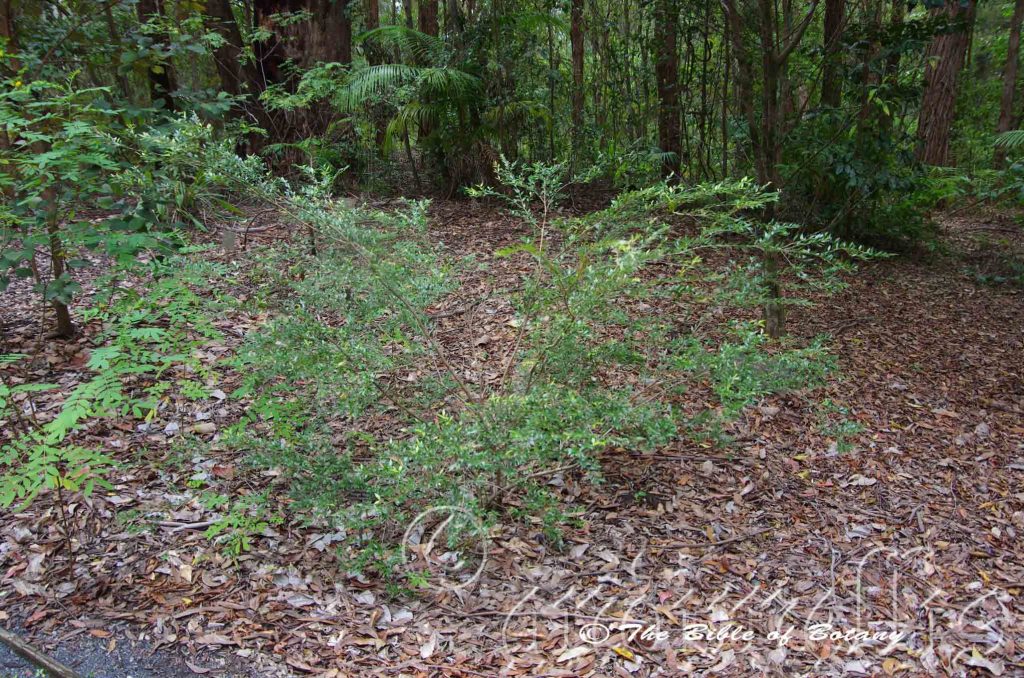
NCBG Coffs Harbour NSW
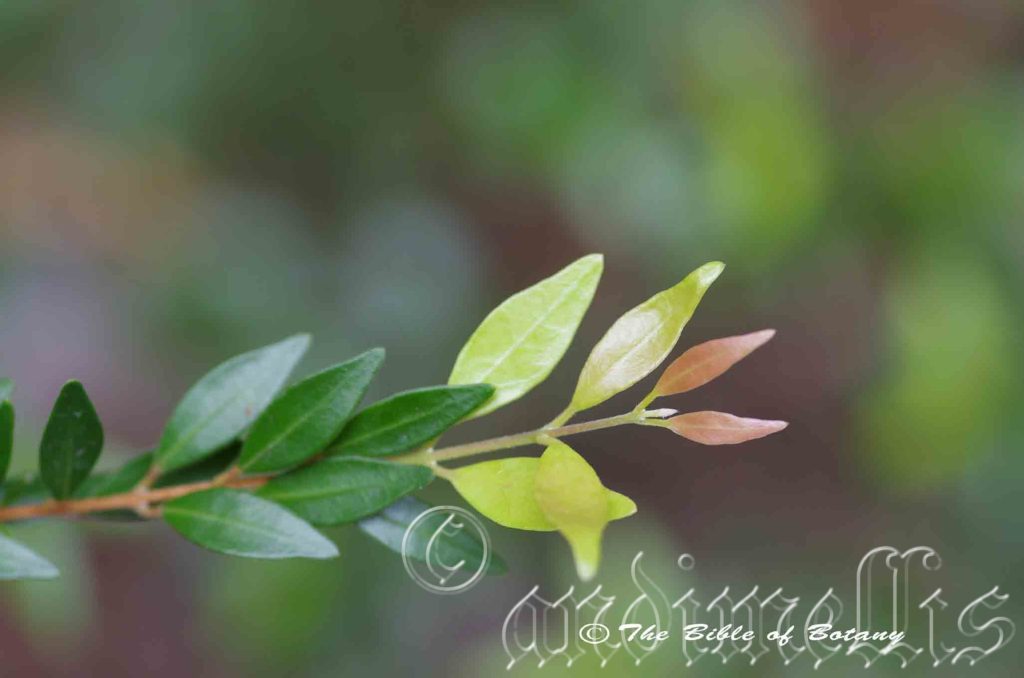
NCBG Coffs Harbour NSW
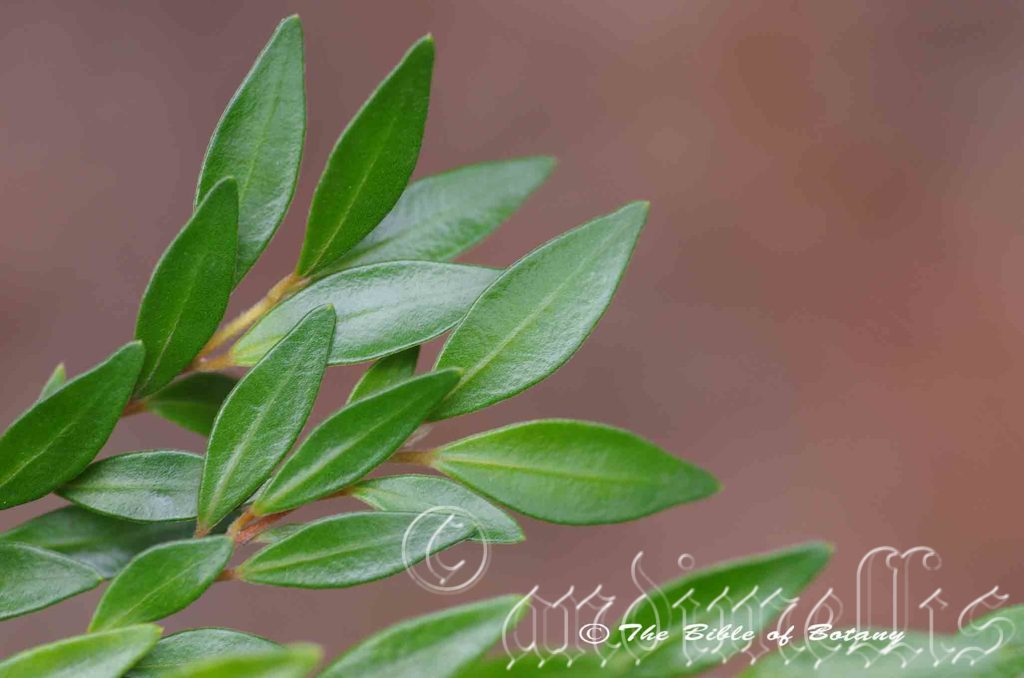
NCBG Coffs Harbour NSW
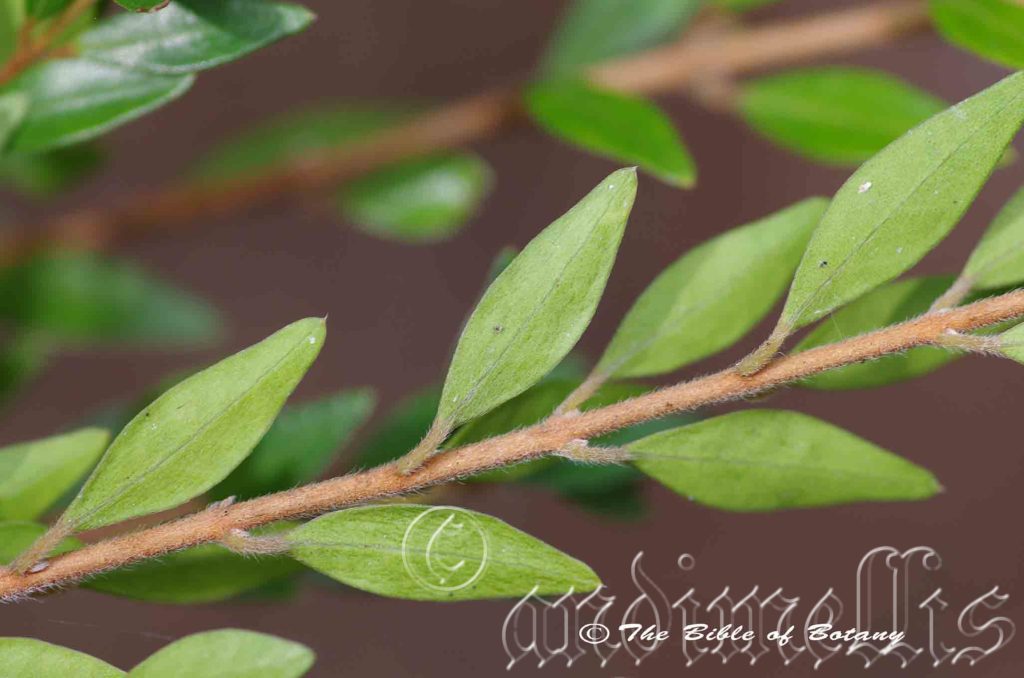
NCBG Coffs Harbour NSW
Uromyrtus lamingtonensis
Classification:
Unranked: Eudicots
Class: Rosids
Order: Myrtales
Family: Myrtaceae
Genus: From Oura/Uratus, which are Ancient Greek for a tail and Myrtis, which is Ancient Greek or Myrtillus, which is Latin for the European Myrtus communins. It refers to plants, which resemble the Myrtle plant, which the Greeks considered a sacred plant to be given to the goddess Aphrodite because its powers encompassed love, beauty, desire, sex (uality), fertility and prosperity for women. It worked similarly for the Romans with their goddess Venus.
Specie: From Lamington, which is Latin for Mount Lamington and Anum/Ensis, which is Latin for originating from. It refers to plants, which were discovered in the Lamington Plateau National Park in south eastern Queensland.
Sub specie:
Common Name:
Distribution:
Uromyrtus lamingtonensis is restricted to an area around the Garragoolba Lookout in the Lamington National Park in far south eastern Queensland and the Macpherson Ranges in far north eastern New South Wales.
https://avh.ala.org.au/occurrences/search?taxa=Uromyrtus+lamingtonensis#tab_mapView
Habitat Aspect Climate:
Uromyrtus lamingtonensis prefers dappled shade to full sun and is found growing in the mountains of warm well developed rainforests. The altitude ranges from 800 meters ASL to 950 meters ASL.
The temperatures range from 2 degrees in July to 32 degrees in January.
The rainfall ranges from lows of 1100mm to 2000mm average per annum.
Soil Requirements:
Uromyrtus lamingtonensis prefers better quality light clays to medium clays with a high proportion of leaf litter close to the parent rock. The soils are derived from decomposed black basalts. The soils pH ranges from 5pH to 7pH. It does not tolerate waterlogged soils however plants in riparian zones may be inundated for short periods during storms. Non saline soils to moderately saline soils are tolerated.
Height & Spread:
Wild Plants: 2m to 5m by 3m to 5m.
Characteristics:
Uromyrtus lamingtonensis grows as a small tree often with a crooked, pale grey, grey-brown to greyish-brown scabrous, scaly, flaky bark on the trunk. The main stems are reddish-brown, glabrous and semi glossy. The smallest stems and new growth are mid grass-green are sparsely to densely covered in silky white pubescent hairs.
The alternate, lanceolate to ovate, narrow-elliptic or rarely ovate leaves of Uromyrtus australis measure 15mm to 26mm in length by 4mm to 10.5mm in width. The petiole is glabrous to sparsely to moderately covered in silky white pubescent hairs and measures 2mm to 3mm in length. The bases are rounded while the apexes are acute to acuminate. The coriaceous, discolourous laminas are deep sea-green, semi glossy and glabrous on the upper lamina while the lower laminas are paler, dull and sparsely to moderately covered in silky white pubescent hairs. The minute oil glands are very dense and conspicuous on the new growth and obscure on the mature leaves.
The laminas are flat and decurve slightly downwards close to the apex. The leaf margins are entire. The mid vein is slightly prominent on the lower lamina and is faintly visible on the upper laminas while the lateral veins are scarcely visible. The new growth is glossy auburn-brown and glossy.
The inflorescences of Uromyrtus lamingtonensis are born singularly or at times in pairs from the leaf axils. The slender, grass-green pedicels are glabrous to sparsely covered in silky white puberulent hairs and measure 4mm to 6mm in length. The grass–green hypanthium is sparsely to moderately covered in silky white villous hairs. The 5 orbicular, grass-green sepals are divaricate, sparsely covered in silky white villous hairs externally and are glabrous internally. The sepals measure 1.4mm to 1.8mm in length by 1.4mm to 1.8mm in width. The white to pale rose pink or white streaked pink petals are orbiculare to obovate and measure 3.5mm to 5mm in length by 3mm to 5mm in width.
The 5 short, stout stamens are free for their entire length but are so tightly grouped that they may appear to be united measure 1.4mm to 1.6mm in length. The filaments and anthers are pale yellow-ochre.
The slender white style tapers to the spherical stigma, is glabrous and measures 3.5mm to 5mm in length. Uromyrtus lamingtonensis’s flowers appear from early September through to late February.
The fruits of Uromyrtus lamingtonensis are globose berries. The berries are glabrous or sparsely covered in silky white puberulent hairs and measure 5mm to 8mm in length by 6mm to 10mm in diameter. The green capsules turn red then black, succulent and soft when ripe. The calyx lobes are persistent on the ripe fruit while the style is discarded as the fruits ripen. The 2 to 8 glossy brown seeds are compressed spherical and glabrous. The fruits ripen between April and July.
Wildlife:
Uromyrtus lamingtonensis’s flowers are attended by native bees and small beetles. I have not seen any birds or animals consume the fruits however I would suspect all the fruitigrove birds would eat the fruits.
I have not eaten the fruits so cannot comment first hand on the flavour but believe them to be sweet with a Eucalyptus flavour.
Cultivation:
Uromyrtus lamingtonensis is a magnificent small tree or large shrub that should be grown in association with other small rainforest specie. It is ideal at the edge of a rainforest or deep in the center of the rainforest. It also makes a great small park tree offering reasonably quick growth, and good shade. In cultivation it grows from 4 meters to 5 meters in height by 3 meters to 4 meters in diameter when grown in the open.
It grows exceptionally well on medium clays where deep leaf litter keeps the soil cool and moisture at an even level. If these requirements are met they can cope with temperatures as low as minus 2 degrees and up to 39 degrees. It is moderately drought resistant but has a tendency to drop leaves quickly once stressed.
Add to the above, if it is given an adequate supply of water and a little native fertilizer on a regular basis the plants should respond with good flowering and fruit over a long period.
This tree could be used as bonsai plant as I have seen some trees in the forest that have grown in some very difficult conditions take on some weird shapes.
Propagation:
Seeds: Seeds of Uromyrtus lamingtonensis can be removed easily from the fruits. Store any excess seeds in the vegetable crisper of the refrigerator ensuring that they do not freeze.
Sow fresh seeds directly into a seed raising mix, keeping them moist not wet. Do not over water as the seeds will rot off before germination takes place. Place the trays in a cool shaded area with 50mm shade cloth in the bush house. When the seedlings reach 30mm to 55mm tall, prick them out and plant them into 50mm native tubes using a good organic mix.
As the seedlings roots reach the bottom of the tubes plant them out into their permanent position. Do not delay.
Fertilize using Seaweed, fish emulsion or organic chicken pellets soaked in water and apply the liquid on an alternate basis. Fertilize every 2 months until the plants are well established then on an annual basis in September or March to maintain better health, vitality and flowering.
Further Comments from Readers:
“Hi reader, it seems you use The Bible of Botany a lot. That’s great as we have great pleasure in bringing it to you! It’s a little awkward for us to ask, but our first aim is to purchase land approximately 1,600 hectares to link several parcels of N.P. into one at The Pinnacles NSW Australia, but we need your help. We’re not salespeople. We’re amateur botanists who have dedicated over 30 years to saving the environment in a practical way. We depend on donations to reach our goal. If you donate just $5, the price of your coffee this Sunday, We can help to keep the planet alive in a real way and continue to bring you regular updates and features on Australian plants all in one Botanical Bible. Any support is greatly appreciated. Thank you.”
In the spirit of reconciliation we acknowledge the Bundjalung, Gumbaynggirr and Yaegl and all aboriginal nations throughout Australia and their connections to land, sea and community. We pay our respect to their Elders past, present and future for the pleasures we have gained.
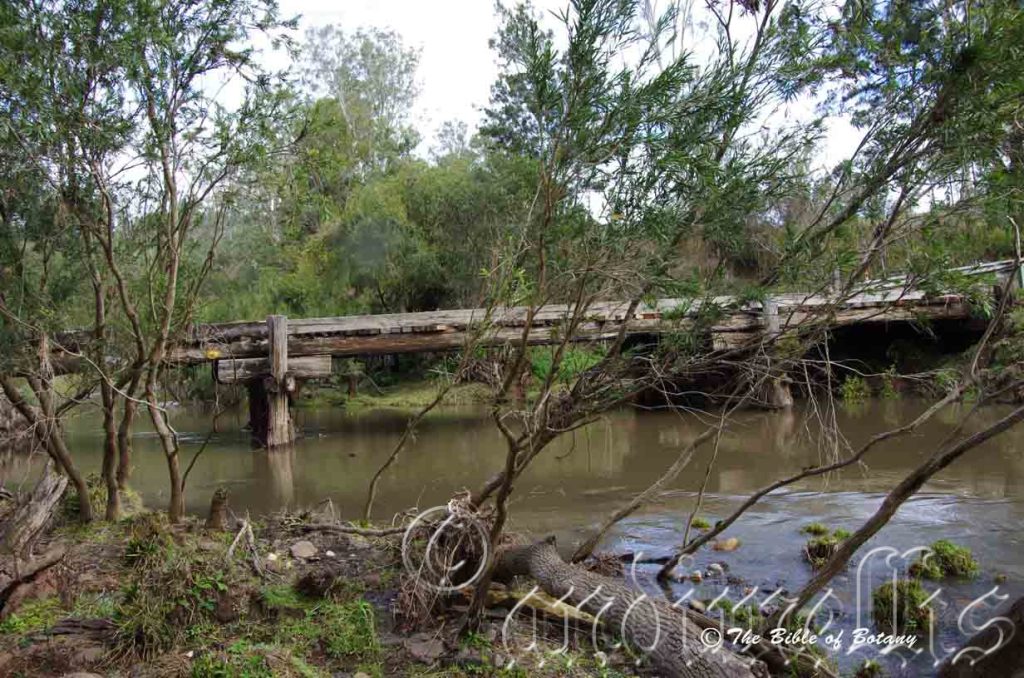
Border Ranges National Park NSW
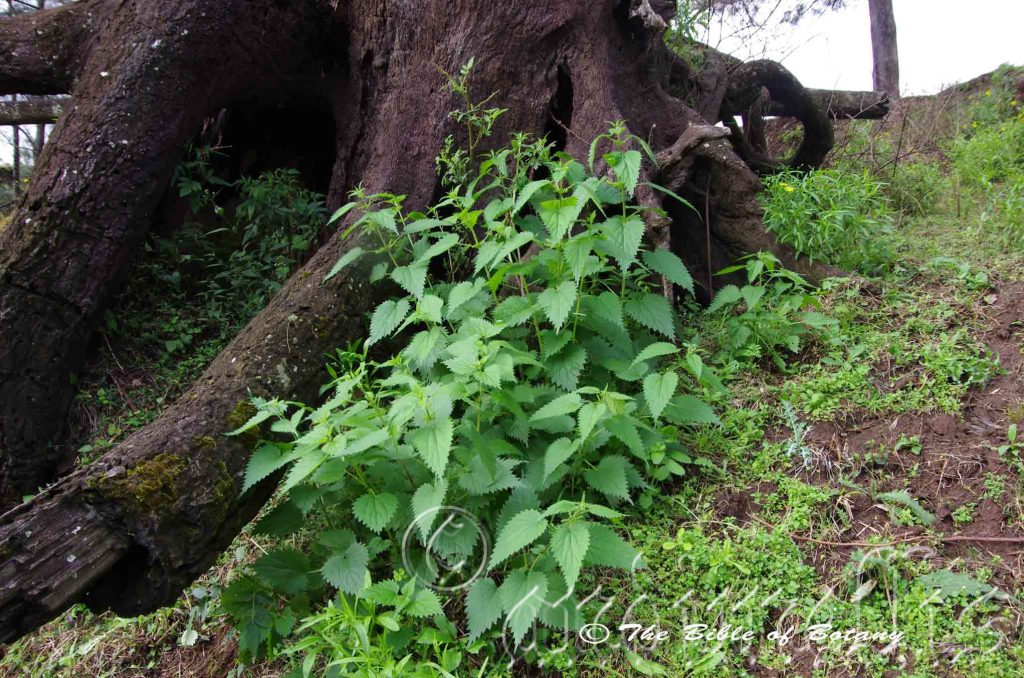
Border Ranges National Park NSW
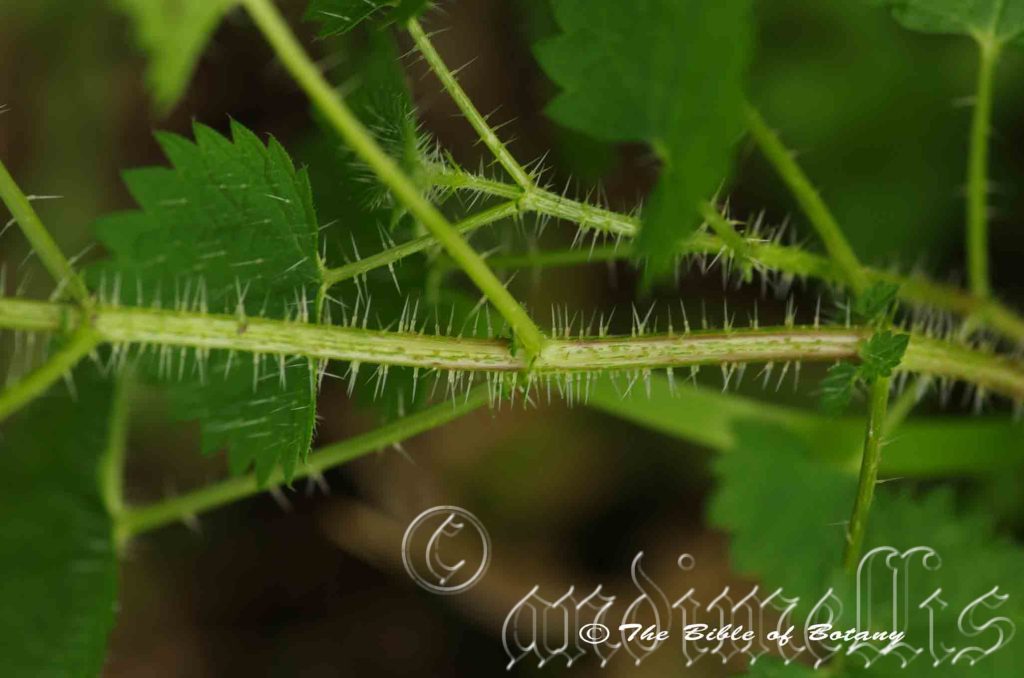
Border Ranges National Park NSW
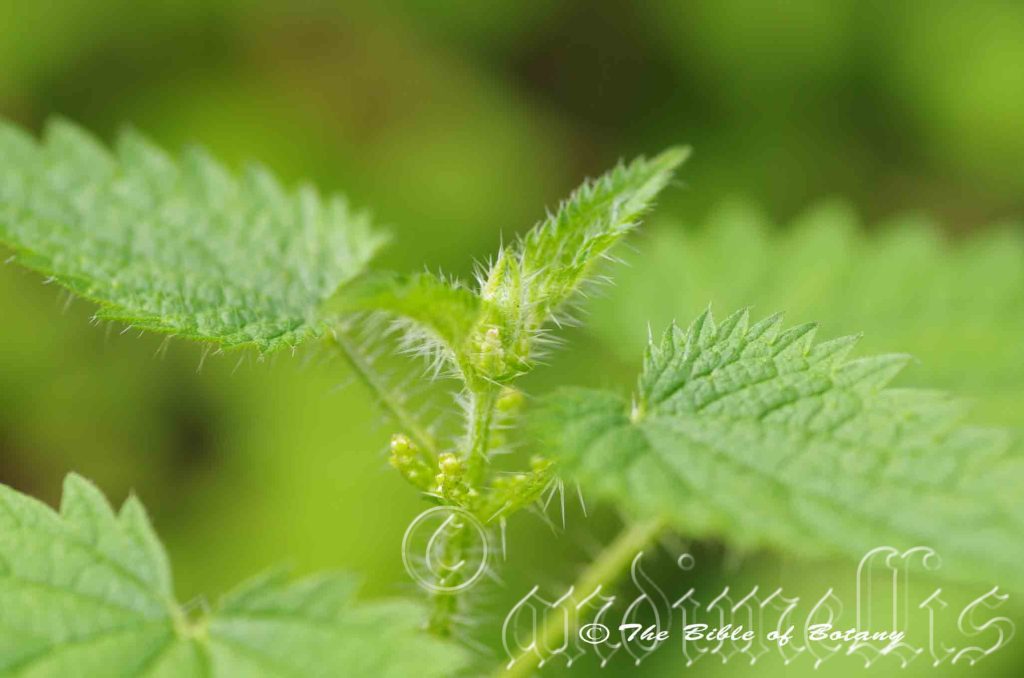
Border Ranges National Park NSW
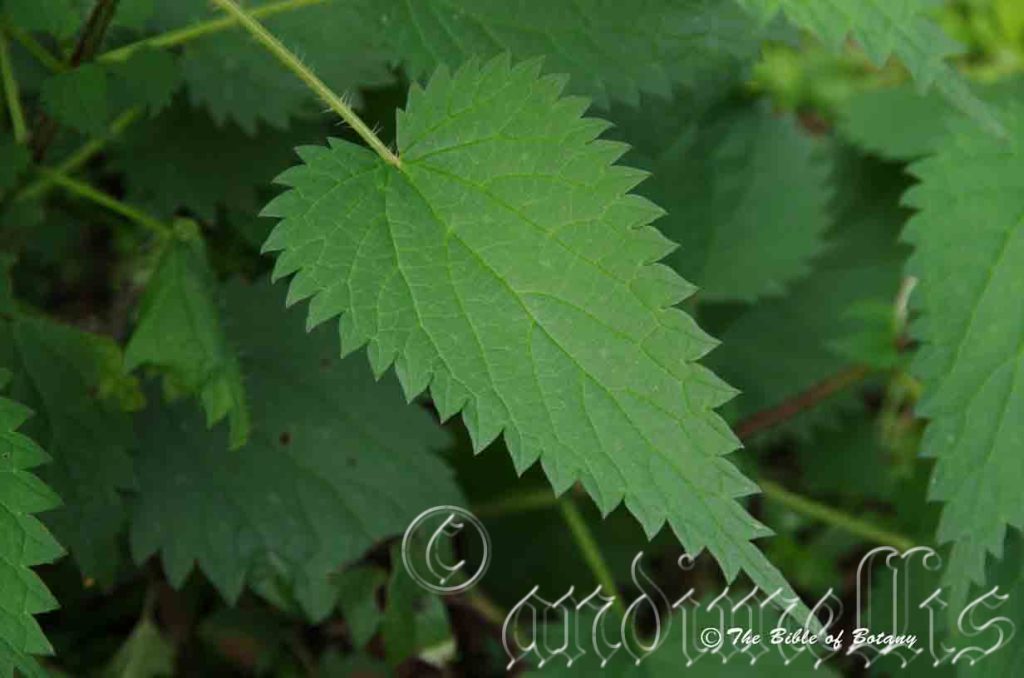
Kyogle NSW
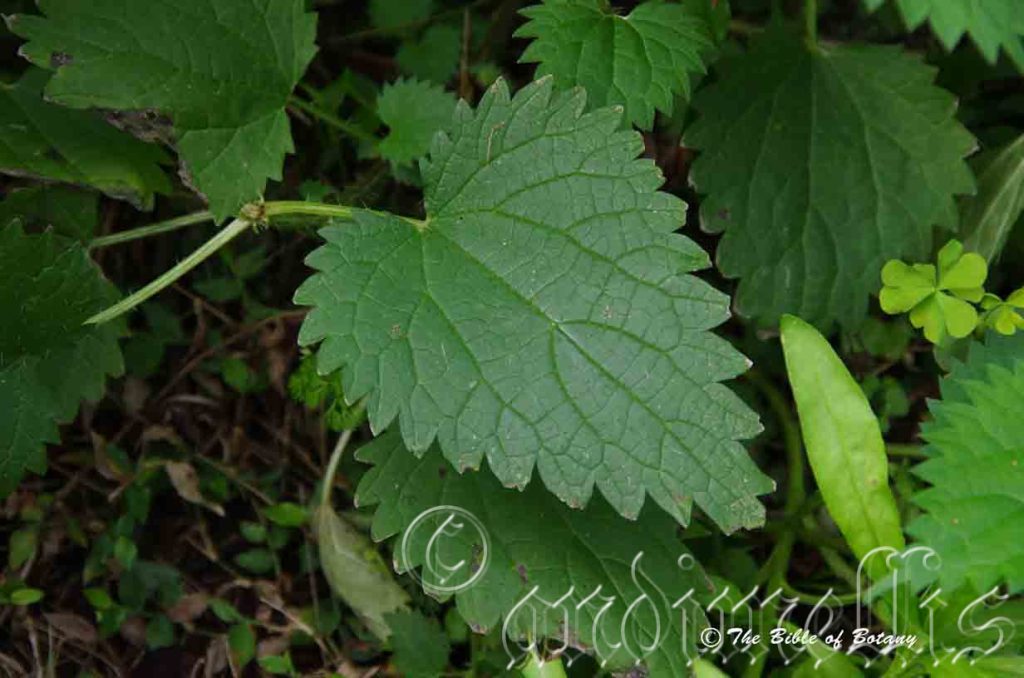
Kyogle NSW
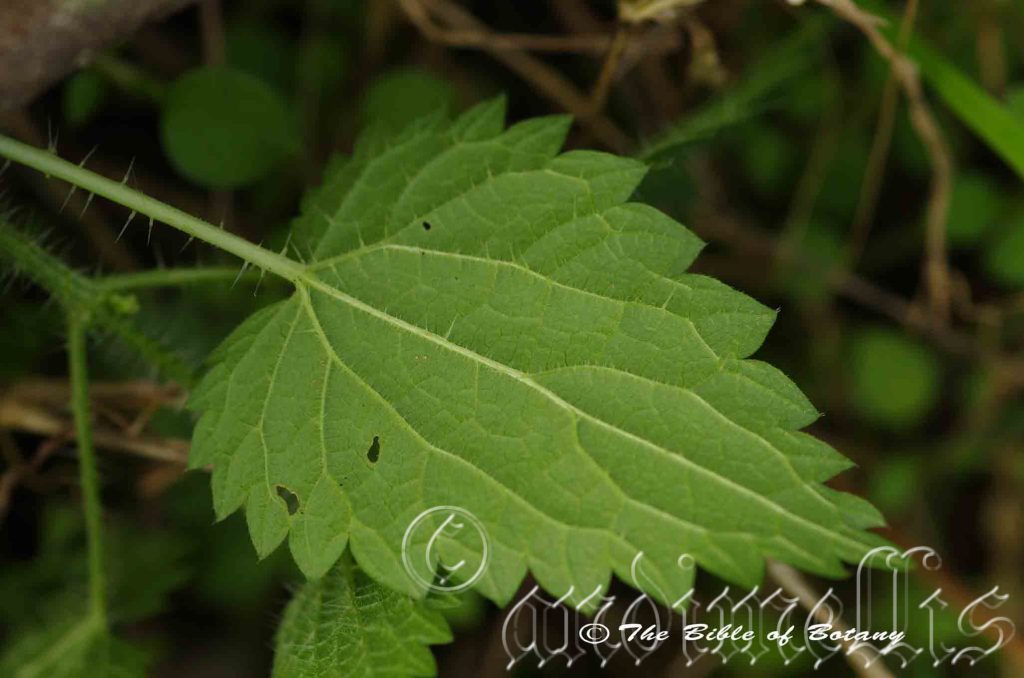
Border Ranges National Park NSW
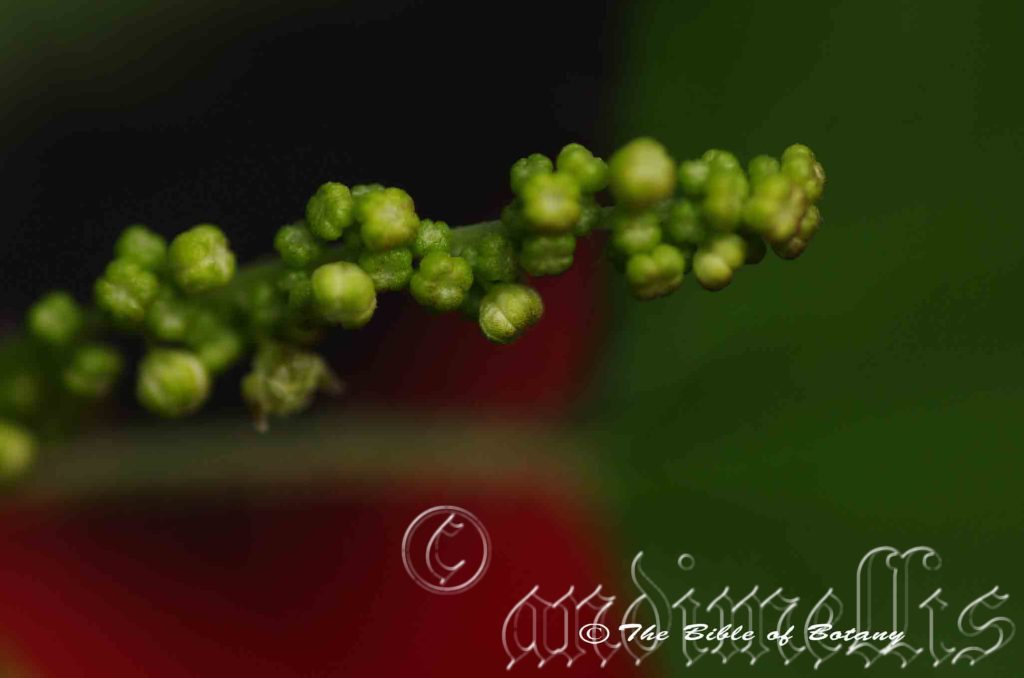
Border Ranges National Park NSW
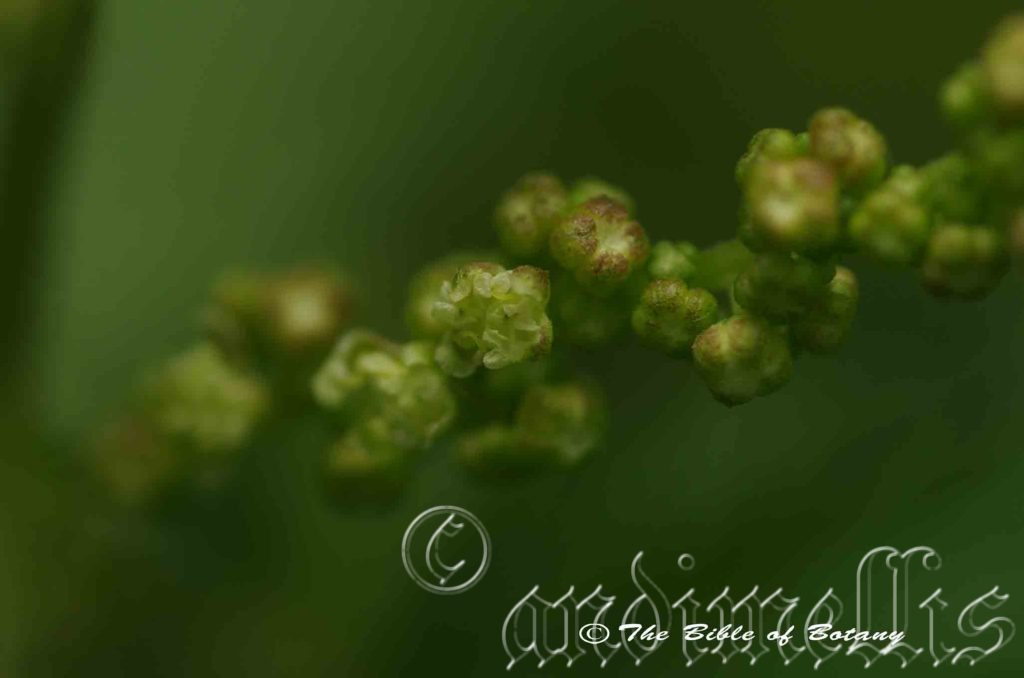
Border Ranges National Park NSW
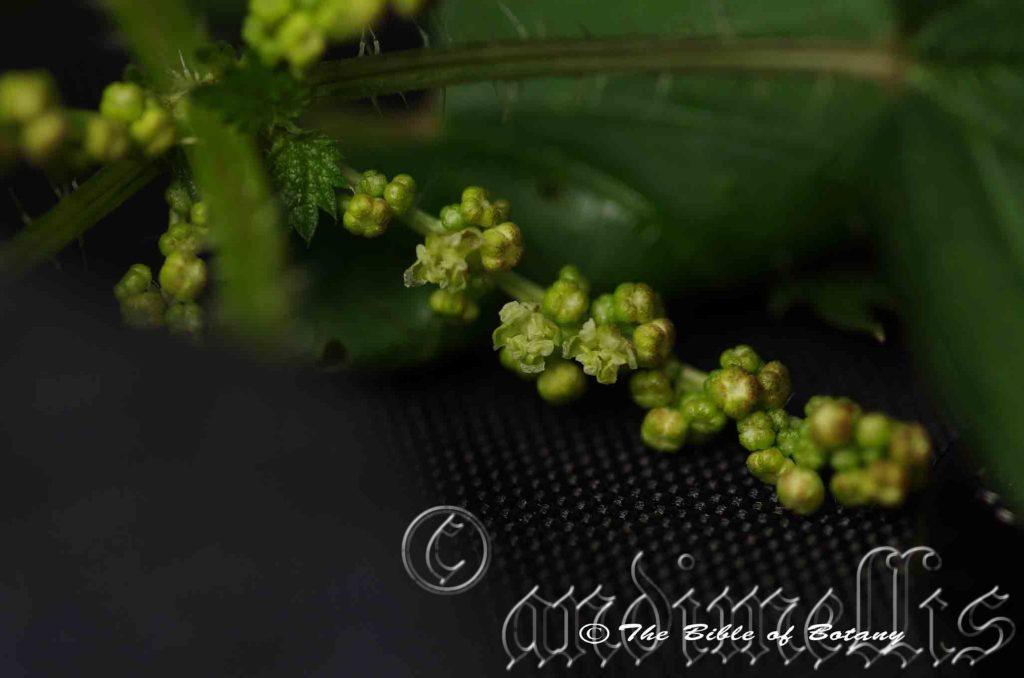
Border Ranges National Park NSW
Urtica incisa
Classification:
Unranked: Eudicots
Unranked: Rosids
Order: Rosales
Family: Urticaceae
Tribe: Utrica
Genus: From Urticus, which is Latin for the stinging nettle. It refers to plants, which are closely related to the European stinging nettles.
Specie: From Incisus, which is Latin for to be deeply cut. It refers to leaf margins, which have a deeply cut or torn appearance.
Sub specie:
Common Name: Stinging Nettle or Scrub Nettle.
Distribution:
Urtica incisa is found south from near Taroom in southern Queensland to Wilson’s Promontory in southern Victoria then to Adelaide and Kangaroo Island, along the Murray River Basin and west of Mildura in South Australia. It is found on the eastern side of the Western Plains, Western Slopes, on and east of the Great Dividing Range to the coast.
It is found over most of Tasmania and the Bass Strait Islands excluding the highlands of the north east and south west.
It is also found on the north and south Islands of New Zealand.
https://avh.ala.org.au/occurrences/search?taxa=Urtica+incisa#tab_mapView
Habitat Aspect Climate:
Urtica incisa prefers dappled shade to full sun. It grows in mountain gullies, in warm moist well developed rainforests, temperate rainforests, cool moist subtropical rainforests or moist protected gallery forests. It is common on disturbed land often colonizing organically rich soils near cattle yards and chicken runs. It is a good indicator of healthy fertile soils. The altitude ranges from 500 meters ASL to 800 meters ASL in far north Queensland while the southern plants are found from 10 meters ASL to 900 meters ASL.
The temperatures range from minus 4 degrees in July to 32 degrees in January.
The rainfall ranges from lows of 350mm to 2000mm average per annum.
Soil Requirements:
Urtica incisa prefers most types of sandy loams through to heavy clays. The soils are derived from most types of rocks including basalts, sandstones, metamorphic, laterites, shale, and limestone. The soils pH ranges from 4.2pH to 7.5pH. It does not tolerate waterlogged soils however plants in riparian zones may be inundated for short periods during storms. Non saline soils to moderately saline soils are tolerated.
It is a good indicator of soils that are going through a change in structure and fertility.
Height & Spread:
Wild Plants: 0.6m to 1m by 0.2m to 0.5m.
Characteristics:
Urtica incisa grows as an erect perennial herb with, erect, deep grass-green to sea-green or purple angulated stems with or without short wings particularly on the juvenile stems. The juvenile stems are similar to the mature stems. The stems are sparsely to moderately covered in white to translucent trichomous or stinging hairs.
The opposite, broadly ovate, narrowly ovate, narrow triangular to broadly lanceolate leaves of Urtica incisa measure 20mm to 100mm in length by 15mm to 60mm in width. The bases are broad cordate to almost truncate while the apex is narrowly acute after the last pair of teeth. The concolourous to slightly discolourous laminas are deep grass-green to sea-green, dull to semi glossy, glabrous and sparsely covered in white to translucent trichomes or stinging hairs on the upper laminas and are dull on the lower laminas. The leaf margins are coarsely toothed the 16 to 24 teeth. The laminas are flat to slightly recurved from the mid vein to the margins and decurve slightly close to the apexes. The laminas are convex between the lateral veins. The mid vein and main laterals are slightly prominent on both laminas. The lanceolate stipules measure 5mm to 15mm in length with coarsely toothed margins. The petioles are usually over half the length of the lamina and are grooved on the upper surface. The petioles measures 12mm to 60mm in length.
The inflorescences of Urtica incisa are monoecious, are usually born on tightly packed racemes from the leaf axils though at times they are born in loose panicles. There are 1 or 2 racemes to a leaf axil. The male flowers appear at the base and open first followed by the female flowers closer to the apex of the racemes. The deep green to purple-green peduncles, rachises and pedicels are sparsely covered in white to translucent trichomes or stinging hairs. The peduncles measure 5mm to 10mm in length while the rachises measure 15mm to 50mm in length and the pedicels measure 0.1mm to 0.5mm in length. The 4 oblong, grass-green tepals are erect, glabrous and concave. The dimorphic tepals measure 1mm to 1.8mm in length by o.6mm to 1mm in width.
The 4 divaricate, stamens are exserted and free for their entire length. The pale grass-green, translucent filaments measure 2.8mm to 3.5mm in length while the pastel green, translucent anthers measure 1mm to 1.6mm in diameter. The copious quantities of pollen are white.
The pastel green, translucent style, stigma and ovary are glabrous. The pistil measures 0.1mm to 0.3mm in length. Urtica incisa’s flowers appear throughout the warmer months especially following rain.
The fruits of Urtica incisa are a raceme with several nuts. The nuts are glabrous and will have a few white to translucent trichomous or stinging hairs and measure 50mm to 60mm in length. The green capsules turn deep grey to black when ripe. The tepals are persistent surrounding the nutlets. The nutlets or achenes measure 2mm to 2.2mm in diameter.
Wildlife:
Urtica incisa’s are the natural hosts to several Australian butterflies including the Malayan Egg Fly Butterfly Hypolimnas anomala, which is found in Northern Queensland and the Northern Territory and the Yellow Admiral or Australian Admiral butterfly Vanessa itea. It is also host to the beautiful black and White Tiger Moth Spilosoma glatignyi.
I have had the misfortune of coming in contact with several species of Urtica in Asia including Urtica dioica and can assure my readers that the Australian species is far more virulent than any of the exotic species I have experienced.
Harvesting must be done prior to the onset of flowers as the plants develop gritty particles known as cystoliths. These cystoliths are complex amorphous calcium carbonate molecules which incorporate magnesium and silicon. These calcium crystals can damage the Liver and cause Kidney Stones if exposed to them for any period.
Stinging nettle has a flavour reminiscent of sweet spinach with a dash of cucumber when cooked. It is a rich source of vitamins A, C, iron, potassium, manganese, calcium and folic acid. Well grown plants also contain up to 25mm protein by dry weight. Soaking nettles in warm water for an hour or blanch the leaves pouring hot water off the boil will remove the stinging chemicals without damaging the vitamin C and allows them to be handled and eaten as a salad vegetable without the incidence of being stung. Boiling similar to spinach will have the same affect but will destroy the vitamin C.
The trichomes contain acetylcholine, histamine, 5-HT (Serotonin), moroidin, leukotrienes, with a small quantity of formic acid. Chemical data collected from: http://bioweb.uwlax.edu
Cultivation:
Urtica incisa is an unusual herb for the connoisseur of fine vegetables. It adapts easily to a more fertile garden soils and should be grown in areas where it can be easily harvested without the chance of being randomly stung. In cultivation it will grow from 0.5 meters to 1.2 meters in height by 0.3 meters to 0.5 meters in diameter when grown in the open or taller and lankier if grown in heavy shade.
It grows exceptionally well on lighter soils but have little problem adapting to heavier soils that are kept moist. Deep leaf litters keep the soil cool and moisture at an even level. If these requirements are met they can cope with temperatures as low as minus 2 degrees and up to 40 degrees.
Add to the above, if it is given an adequate supply of water and a little organic native fertilizer on a regular basis the plants will respond with good flowering and fruit over a long period.
Whilst photographing this plant I had a young Chinese student with me on a cultural exchange programme. He was holding the plant in one hand with a pair of gloves because I had told him to beware as the plants hairs sting. As his class mates approached he inadvertently changed it to his unprotected hand and was half way through telling his mates “Beware this plant STINGS and BURNS!” “Yes, I know” I said calmly. Nothing like experiencing, the Australian bush first hand. His mates believed him. That evening we feasted on fresh Urtica incisa leaves and tip stems.
Propagation:
Seeds: Seeds of Urtica incisa can be removed easily from the fruits.
Sow fresh seeds directly into a seed raising mix, keeping them moist not wet. Do not over water as the seeds will rot off before germination takes place. Place the trays in a cool shaded area with 50mm shade cloth in the bush house. When the seedlings are 20mm to 25mm tall, prick them out and plant them directly into the garden.
As the seedlings roots reach the bottom of the tubes plant them out into their permanent position. Do not delay.
Fertilize using Seaweed, fish emulsion or organic chicken pellets soaked in water and apply the liquid on an alternate basis. Fertilize every 2 months until the plants are well established then on a biannual basis in September and March to maintain better health, vitality and flowering if the plants are to be used for a table vegetable or medicine.
Further Comments from Readers:
“Hi reader, it seems you use The Bible of Botany a lot. That’s great as we have great pleasure in bringing it to you! It’s a little awkward for us to ask, but our first aim is to purchase land approximately 1,600 hectares to link several parcels of N.P. into one at The Pinnacles NSW Australia, but we need your help. We’re not salespeople. We’re amateur botanists who have dedicated over 30 years to saving the environment in a practical way. We depend on donations to reach our goal. If you donate just $5, the price of your coffee this Sunday, We can help to keep the planet alive in a real way and continue to bring you regular updates and features on Australian plants all in one Botanical Bible. Any support is greatly appreciated. Thank you.”
In the spirit of reconciliation we acknowledge the Bundjalung, Gumbaynggirr and Yaegl and all aboriginal nations throughout Australia and their connections to land, sea and community. We pay our respect to their Elders past, present and future for the pleasures we have gained.
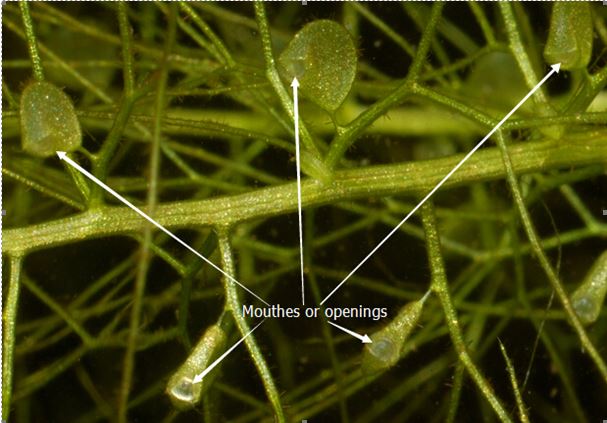
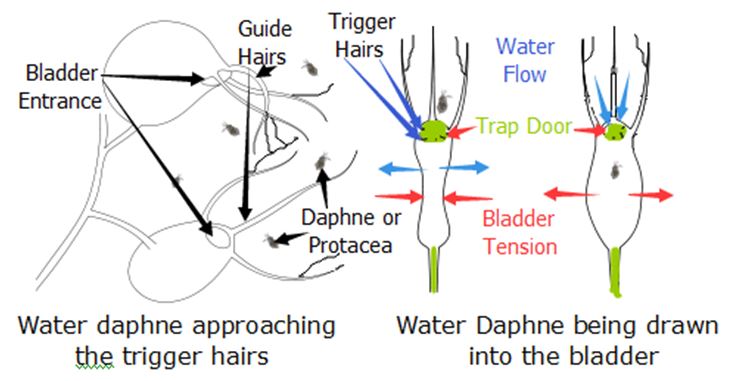
Utricularia aurea
Classification:
Unranked: Eudicots
Class: Asterids
Order: Lamiales
Family: Lentibulariaceae
Genus: From Póteros which is Ancient Greek for a leather pouch and later Urtricularia which is Latin for a raft floating on leather bladders. It refers to plants, which have specialized leaves, which resemble bladders.
Specie: From Aurea, which is Latin for yellow-orange or golden-yellow. It refers to structures or organs, which are yellow-orange or golden-yellow in colour.
Sub specie:
Common Name: Golden Bladderwort.
Distribution:
Utricularia aurea is found south from Derby and the Ord River in north western, Western Australia across the top end to Natal Lagoon on the Natal River and the tip of Cape York Peninsula then down the east coast of Queensland to Kempsey in Northern Coastal New South Wales.
It is the most common bladderwort found in Assam, Bangladesh, Borneo, Cambodia, China, Hainan, India, Japan, Jawa, Korea, Laos, Lesser Sunda Island, Malaya, Myanmar, Nepal, New Guinea, Papua, Pakistan, Philippines, Sri Lanka, Sulawesi, Sumatera, Taiwan, Thailand and Vietnam.
https://avh.ala.org.au/occurrences/search?taxa=Utricularia+aurea#tab_mapView
Habitat Aspect Climate:
Utricularia aurea prefers partial shade to full sun. It grows in fresh water lakes, ponds, billabongs, swamps and backwaters. The plants often develop underground tubers where water is seasonal re sprouting once rains water return and fill the water ways. The altitude ranges from 5 meters ASL to 900 meters ASL in far north Queensland while the southern plants are found from 10 meters ASL to 150 meters ASL.
The air temperatures range from 1 degree in July to 42 degrees in January.
The rainfall ranges from lows of 800mm to 3200mm average per annum.
Soil Requirements:
Utricularia aurea prefers most types of sandy loams through to heavy silts and muds. The soils are derived from most types of rocks including basalts, sandstones, metamorphic, laterites, shale, and limestone. The soils pH ranges from 5.2pH to 7.5pH. It tolerates waterlogged soils growing permanently in water. Non saline soils to moderately saline soils are tolerated.
Height & Spread:
Wild Plants: 0.6m to 1.5m by 0.05m to 0.1m.
Characteristics:
Utricularia aurea grows as a suspended, aquatic perennial herb in fresh water. The yellowish-green terete stems are somewhat zigzag and glabrous.
The opposite, semi terete leaves of Utricularia aurea are multi pinnate with 3 to 5 primary segments. The leaves measure 10mm to 80mm in length by 1mm to 2.5mm in diameter while the filiform pinnate segments measure 5mm to 20mm in length. The petioles measures 1.5mm to 4mm in length. The leaves are swollen at the bases while the apex is acicular. The concolourous laminas are mid yellow-green, dull to semi glossy, glabrous to sparsely covered in reddish hirsute hairs. The leaf margins are entire. The mid vein and main laterals are not evident.
The dimorphic trap leaves of Utricularia aurea are ovoid and measure 1mm to 4mm in length while the openings are either lateral or basal.
Utricularia aurea are carnivorous plants that have developed very special leaf structure for the purpose of catching small prey. It is generally agreed by most botanists and enthusiasts that the species within the Utricularia genus are the most sophisticated of all plants. The plants are known to feed on diatoms, blue-green algae, green algae and most types unicellular protozoa that venture too close. Plants with larger bladders have been known to trap and dissolve mosquito larvae.
According to Marianne Peroutka, Wolfram Adlassnig, Michael Volgger, Thomas Lendl, Walter G. Url & Irene K. Lichtscheidl Utricularia up to 80% of the nutrient uptake is via algae with 20% being animal via microscopic or minute invertebrates like daphne.
The leaf traps are numerous near the base of the leaves and are obliquely ovoid to oblong-ovoidal. They measure 1mm to 4mm in length. The dimorphic openings can be lateral or basal.
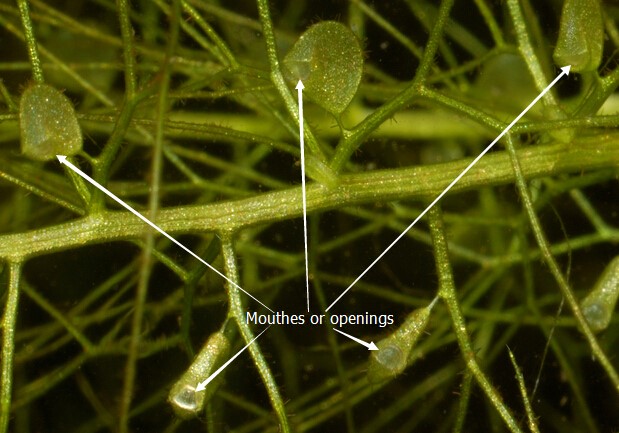
The long, filiform usually branched, antennae guide Daphnia to the trapdoors and trigger hairs of the aquatic bladderwort.
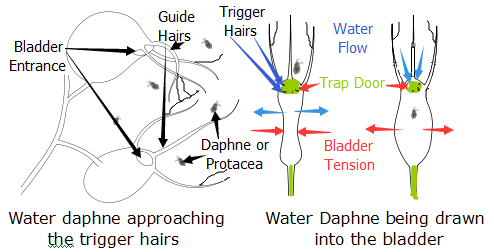
The trapping mechanism of Utricularia is purely mechanical which is triggered by a reaction from the plant in the presence of prey.
The only active mechanism involved is on the hinged door. The water with in the bladder is constantly being removed from the bladder out through the bladder walls by active transport or osmosis.
As water is removed internally, the bladder’s walls are constricted inwards by the lower pressure internally which is created compared to the pressure externally causing the walls to constrict or bend inwards. Any dissolved material inside the bladder will become more concentrated allowing the plant to dissolve more nutrient into the walls which assists in the osmotic pressure differences. The sides of the bladder bend inwards, storing potential energy like a spring. Eventually, no more water can be extracted, and the bladder trap is “fully set.” Technically it is the osmotic pressure, which is the limiting factor.
Extending outwards from the bottom of the trapdoor are several long filiform bristles that are sometimes referred to as trigger hairs or antennae but which have no similarity to the sensitive triggers found in Dionaea and Aldrovanda. These bristles are simply levers. The suction force exerted by the primed bladder on the door is resisted by the adhesion of its flexible bottom against the soft sealing velum. The equilibrium depends quite literally on a hair trigger, and the slightest touch to one of the lever hairs will deform the flexible door lip enough to create a tiny gap, breaking the seal.
Once the seal is disturbed, the bladder walls instantly spring back to a more rounded shape. The door flies open and a column of water rushes into the bladder in an attempt to equalize the pressure. The rushing water creates a slightly higher pressure internally now than what is found externally. The animal which touched the lever, if small enough, is inevitably drawn in and as soon as the trap is filled and the door resumes its closed position. The whole operation is completed in 15 thousandths of a second as measured by Marc Joyeux, Oliver Vincent & Phillipe Marmottant 2008.
Once inside, the prey will be dissolved by digestive secretions. This generally takes from 20 minutes to 6 hours depending on the size of the prey or algae trapped. The time for the bladder to resume its set position can be as little as a few minutes to 58 minutes as measured by Marc Joyeux, Oliver Vincent & Phillipe Marmottant 2008.
The inflorescences of Utricularia aurea are erect, emergent racemes. There are 5 or 12 flowers on a raceme which rise 50mm to 250mm above the water surface are born from the terminals or from short lateral growths along the stems. The scales are absent while the bracts are basifixed and measure 1mm to 2mm in length. The calyx lobes are sub equal, ovate, and measure 2mm to 3mm in length elongating to 9mm in length when in fruit. The pale yellow to bright yellow corolla at times has reddish to reddish-brown veins or longitudinal streaks and are sparsely to densely covered in reddish hirsute hairs or rarely glabrous externally and are glabrous internally. The corolla measures 10mm to 15mmin length. The almost linear, curved, conical spur measures 8mm to 14mm in length. The flowers appear during May.
The fruits of Utricularia aurea are small capsules. The capsules are glabrous and elongate on maturity. The green capsules turn deep grey to black when ripe. The seeds are numerous reddish-brown and measure 0.1 mm to 1.6 mm in diameter.
Wildlife:
Utricularia aurea’s bladders feed on Daphne and other small invertebrate animals in still fresh water.
Cultivation:
Utricularia aurea is an unusual carnivorous plant for the collector. It adapts easily to well lit large aquarium. In cultivation it grows from 0.5 meters to 1.6 meters in length.
It is best grown in the open or where the sides are clear but can be successfully grown in a tank or outside fish pond that is deeper than 150mm in depth with either 40mm to 50mm of peat or sphagnum moss beneath 20mm to 30mm of sand to hold it down. Fill with water then let sit for 24 to 48 hours.
Propagation:
Seeds: Seeds of Utricularia aurea are difficult if not near impossible to collect. Gather plants from the wild where permits or permission is allowed. Place in a plastic bag with water.
Prepare a pot with either 40mm to 50mm of peat or sphagnum moss beneath 20mm to 30mm of sand to hold it down. Sow fresh seeds directly into sand and cover with 1mm of the sand. Gently place the pot into a tank or pond with 150mm of water. Alternatively place the material collected earlier and place on the pot and hold down with pin clips opened out or hair pins spread apart.
Do not fertilize.
Further Comments from Readers:
“Hi reader, it seems you use The Bible of Botany a lot. That’s great as we have great pleasure in bringing it to you! It’s a little awkward for us to ask, but our first aim is to purchase land approximately 1,600 hectares to link several parcels of N.P. into one at The Pinnacles NSW Australia, but we need your help. We’re not salespeople. We’re amateur botanists who have dedicated over 30 years to saving the environment in a practical way. We depend on donations to reach our goal. If you donate just $5, the price of your coffee this Sunday, We can help to keep the planet alive in a real way and continue to bring you regular updates and features on Australian plants all in one Botanical Bible. Any support is greatly appreciated. Thank you.”
In the spirit of reconciliation we acknowledge the Bundjalung, Gumbaynggirr and Yaegl and all aboriginal nations throughout Australia and their connections to land, sea and community. We pay our respect to their Elders past, present and future for the pleasures we have gained.
Utricularia australis
Classification:
Unranked: Eudicots
Class: Asterids
Order: Lamiales
Family: Lentibulariaceae
Genus: From Póteros which is Ancient Greek for a leather pouch and later Urtricularia which is Latin for a raft floating on leather bladders. It refers to plants, which have specialized leaves, which resemble bladders.
Specie: From Terra Australis, which is Latin for land of the south. It refers to plants, which were first discovered from the land down under.
Sub specie:
Common Name: Yellow Bladderwort.
Distribution:
Utricularia australis is found around the coastal fringe within 150 kilometres from the coast except in the south east where it extends further inland from near Brisbane in south east Queensland to Mount Gambier in south eastern South Australia.
https://avh.ala.org.au/occurrences/search?taxa=Utricularia+australis#tab_mapView
Habitat Aspect Climate:
Utricularia australis prefers partial shade to full sun. It grows in fresh water lakes, ponds, billabongs, swamps and backwaters. The plants often develop underground tubers where water is seasonal re sprouting once rains water return and fill the water ways. The altitude ranges from 5 meters ASL to 280 meters ASL.
The air temperatures range from minus 3 degree in July to 42 degrees in January.
The rainfall ranges from lows of 350mm to 3200mm average per annum.
Soil Requirements:
Utricularia australis prefers most types of sandy loams through to heavy silts and muds. The soils are derived from most types of rocks including basalts, sandstones, metamorphic, laterites, shale, and limestone. The soils pH ranges from 5.2pH to 7pH. It tolerates waterlogged soils growing permanently in water. Non saline soils to moderately saline soils are tolerated.
Height & Spread:
Wild Plants: 0.6m to 1.5m by 0.05m to 0.1m.
Characteristics:
Utricularia australis grows as a suspended, aquatic perennial herb in fresh water. The yellowish-green to lime-green terete stems are straight.
The alternate, terete leaves of Utricularia australis are pinnate leaves are divided equally from the base into 2 equal primary segments, each with pinnately divided terete leaflets. The leaves measure 15mm to 40mm in length by 1mm to 2mm in diameter while the filiform pinnate segments measure 8mm to 20mm in length overall and the ultimate segments measure 5mm to 10mm in length. The petioles measures 1mm to 2mm in length. The acicular leaves are not swollen at the bases while the apexes are narrow acute. The concolourous laminas are mid yellow-green to lime-green, dull to semi glossy, glabrous to sparsely covered in reddish hirsute hairs. The leaf margins are entire. The mid vein and main laterals are not evident.
The dimorphic trap leaves of Utricularia australis are ovoid and measure 0.5mm to 2.5mm in length while the openings are either lateral or basal.
Utricularia australis are carnivorous plants that have developed very special leaf structure for the purpose of catching small prey. It is generally agreed by most botanists and enthusiasts that the species within the Utricularia genus are the most sophisticated of all plants. The plants are known to feed on diatoms, blue-green algae, green algae and most types unicellular protozoa that venture too close. Plants with larger bladders have been known to trap and dissolve mosquito larvae.
According to Marianne Peroutka, Wolfram Adlassnig, Michael Volgger, Thomas Lendl, Walter G. Url & Irene K. Lichtscheidl Utricularia up to 80% of the nutrient uptake is via algae with 20% being animal via microscopic or minute invertebrates like daphne.
The leaf traps are numerous near the base of the leaves and are obliquely ovoid to oblong-ovoidal. They measure 1mm to 4mm in length. The dimorphic openings can be lateral or basal.
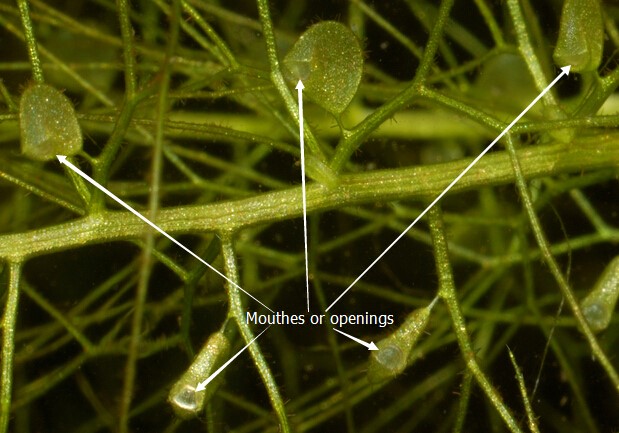
The long, filiform usually branched, antennae guide Daphnia to the trapdoors and trigger hairs of the aquatic bladderwort.
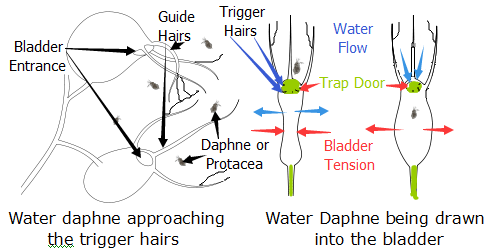
The trapping mechanism of Utricularia is purely mechanical which is triggered by a reaction from the plant in the presence of prey.
The only active mechanism involved is on the hinged door. The water with in the bladder is constantly being removed from the bladder out through the bladder walls by active transport or osmosis.
As water is removed internally, the bladder’s walls are constricted inwards by the lower pressure internally which is created compared to the pressure externally causing the walls to constrict or bend inwards. Any dissolved material inside the bladder will become more concentrated allowing the plant to dissolve more nutrient into the walls which assists in the osmotic pressure differences. The sides of the bladder bend inwards, storing potential energy like a spring. Eventually, no more water can be extracted, and the bladder trap is “fully set.” Technically it is the osmotic pressure, which is the limiting factor.
Extending outwards from the bottom of the trapdoor are several long filiform bristles that are sometimes referred to as trigger hairs or antennae but which have no similarity to the sensitive triggers found in Dionaea and Aldrovanda. These bristles are simply levers. The suction force exerted by the primed bladder on the door is resisted by the adhesion of its flexible bottom against the soft sealing velum. The equilibrium depends quite literally on a hair trigger, and the slightest touch to one of the lever hairs will deform the flexible door lip enough to create a tiny gap, breaking the seal.
Once the seal is disturbed, the bladder walls instantly spring back to a more rounded shape. The door flies open and a column of water rushes into the bladder in an attempt to equalize the pressure. The rushing water creates a slightly higher pressure internally now than what is found externally. The animal which touched the lever, if small enough, is inevitably drawn in and as soon as the trap is filled and the door resumes its closed position. The whole operation is completed in 15 thousandths of a second as measured by Marc Joyeux, Oliver Vincent & Phillipe Marmottant 2008.
Once inside, the prey will be dissolved by digestive secretions. This generally takes from 20 minutes to 6 hours depending on the size of the prey or algae trapped. The time for the bladder to resume its set position can be as little as a few minutes to 58 minutes as measured by Marc Joyeux, Oliver Vincent & Phillipe Marmottant 2008.
The inflorescences of Utricularia australis are weakly erect, emergent racemes. There are 4 or 10 flowers on a raceme which rise 100mm to 300mm above the water surface are born from the terminals or from short lateral growths along the stems. There is 1 or rarely 3 scales similar to the bracts, in upper half of peduncle, while the bracts are basifixed and measure 3mm to 5mm in length. The bracteoles are absent. The calyx lobes are slightly unequal, ovate, 3mm to 4mm in length. The mid yellow corolla has reddish-brown lines and spots on the deeper yellow lower lip. The corolla measures 12mm to 20mm in length. The spur is broadly conical and measures 6mm to 12mm in length. The flowers appear from December to January.
The fruits of Utricularia australis are small capsules. The capsules are glabrous and elongate on maturity. The green capsules turn deep grey to black when ripe. The seeds are numerous reddish-brown and measure 0.1 mm to 1.6 mm in diameter.
Wildlife:
Utricularia australis’s bladders feed on Daphne and other small invertebrate animals in still fresh water.
Cultivation:
Utricularia australis is an unusual carnivorous plant for the collector. It adapts easily to large well lit aquariums. In cultivation it grows from 0.5 meters to 1.6 meters in length.
It is best grown in the open or where the sides are clear but can be successfully grown in a bucket, tank or outside fish pond that is deeper than 150mm in depth with either 40mm to 50mm of peat or sphagnum moss beneath 20mm to 30mm of sand to hold it down. Fill with water then let sit for 24 to 48 hours.
Propagation:
Seeds: Seeds of Utricularia aurea are difficult if not near impossible to collect. Gather plants from the wild where permits or permission is allowed. Place in a plastic bag with water.
Prepare a pot with either 40mm to 50mm of peat or sphagnum moss beneath 20mm to 30mm of sand to hold it down. Sow fresh seeds directly into sand and cover with 1mm of the sand. Gently place the pot into a tank or pond with 150mm of water. Alternatively place the material collected earlier and place on the pot and hold down with pin clips opened out or hair pins spread apart.
Do not fertilize but feed Daphne species or other small invertebrate animals.
Further Comments from Readers:
“Hi reader, it seems you use The Bible of Botany a lot. That’s great as we have great pleasure in bringing it to you! It’s a little awkward for us to ask, but our first aim is to purchase land approximately 1,600 hectares to link several parcels of N.P. into one at The Pinnacles NSW Australia, but we need your help. We’re not salespeople. We’re amateur botanists who have dedicated over 30 years to saving the environment in a practical way. We depend on donations to reach our goal. If you donate just $5, the price of your coffee this Sunday, We can help to keep the planet alive in a real way and continue to bring you regular updates and features on Australian plants all in one Botanical Bible. Any support is greatly appreciated. Thank you.”
In the spirit of reconciliation we acknowledge the Bundjalung, Gumbaynggirr and Yaegl and all aboriginal nations throughout Australia and their connections to land, sea and community. We pay our respect to their Elders past, present and future for the pleasures we have gained.

Palmatum Gardens Townsville Qld.
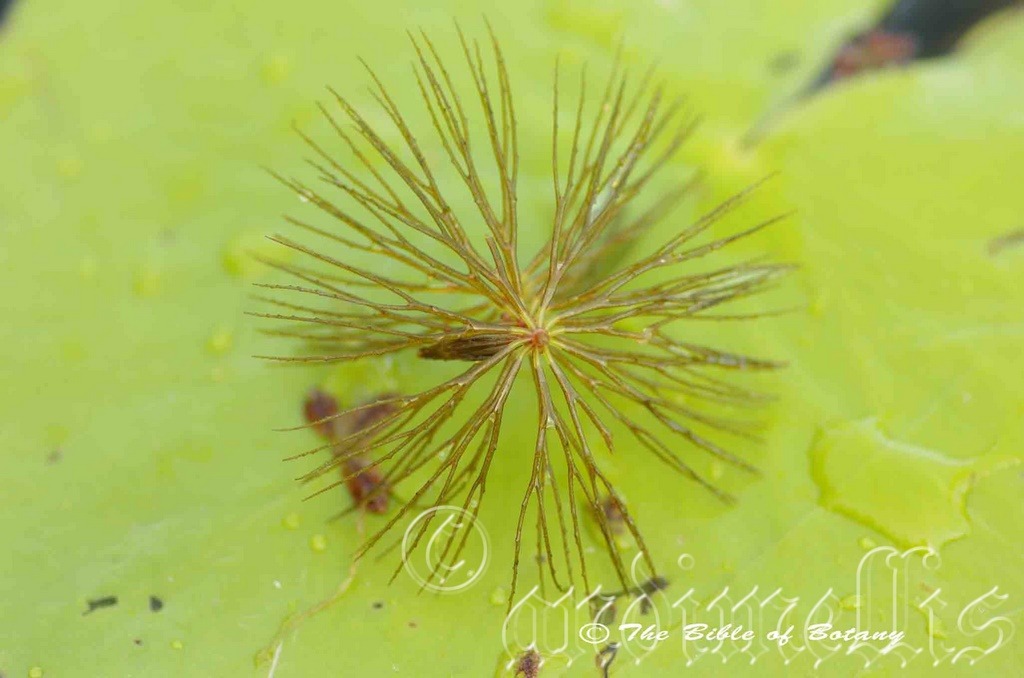
Palmatum Gardens Townsville Qld.
Utricularia biloba
Classification:
Unranked: Eudicots
Class: Asterids
Order: Lamiales
Family: Lentibulariaceae
Genus: From Póteros which is Ancient Greek for a leather pouch and later Urtricularia which is Latin for a raft floating on leather bladders. It refers to plants, which have specialized leaves, which resemble bladders.
Specie: From Bi/Bis, which is Greek/Latin for two and Lobos, which is Ancient Greek for an ear lobe. It refers to flowers, or other structures which have two lobes and two clefts.
Sub specie:
Common Name:
Distribution:
Utricularia biloba is found around the coastal fringe south from Shoalwater Bay in central coastal Queensland to the Royal national Park in central coastal New South Wales.
https://avh.ala.org.au/occurrences/search?taxa=Utricularia+biloba#tab_mapView
Habitat Aspect Climate:
Utricularia biloba prefers partial shade to full sun. It grows in wetter seasonally wet wallums. The altitude ranges from 3 meters ASL to 20 meters ASL.
The air temperatures range from minus 1 degree in July to 36 degrees in January.
The rainfall ranges from lows of 900mm to 2000mm average per annum.
Soil Requirements:
Utricularia biloba prefers most types of sandy loams through to coarse silts. The soils are usually derived from accumulated beach sands or at times sandy alluvial deposits. The soils pH ranges from 6.5pH to 7.2pH. It tolerates waterlogged soils growing permanently wet locations. Non saline soils to moderately saline soils are tolerated.
Height & Spread:
Wild Plants: 0.2m to 0.3m by 0.03m to 0.05m.
Characteristics:
Utricularia biloba grows as a terrestrial or subaquatic perennial herb in fresh water. The yellowish-green to lime-green terete stems are straight.
The linear leaves of Utricularia biloba are simple on smaller leaves and are bipinnate or at times tripinate on the more mature longer leaves. The leaves measure 5mm to 50mm in length by 1mm to 12mm in width. The petioles are very variable. The bases are tapered while the apexes are narrow acute. The concolourous laminas are mid yellow-green to lime-green, dull to semi glossy, glabrous. The leaf margins are entire. The mid vein and main laterals are not evident.
The dimorphic trap leaves of Utricularia biloba are obliquely ovoidal to broad-ovoid and measure 0.5mm to 1.5mm in length while the openings are lateral.
Utricularia biloba are carnivorous plants that have developed very special leaf structure for the purpose of catching small prey. It is generally agreed by most botanists and enthusiasts that the species within the Utricularia genus are the most sophisticated of all plants. The plants are known to feed on diatoms, blue-green algae, green algae and most types unicellular protozoa that venture too close. Plants with larger bladders have been known to trap and dissolve mosquito larvae.
According to Marianne Peroutka, Wolfram Adlassnig, Michael Volgger, Thomas Lendl, Walter G. Url & Irene K. Lichtscheidl Utricularia up to 80% of the nutrient uptake is via algae with 20% being animal via microscopic or minute invertebrates like daphne.
The leaf traps are numerous near the base of the leaves and are obliquely ovoid to oblong-ovoidal. They measure 1mm to 4mm in length. The dimorphic openings can be lateral or basal.
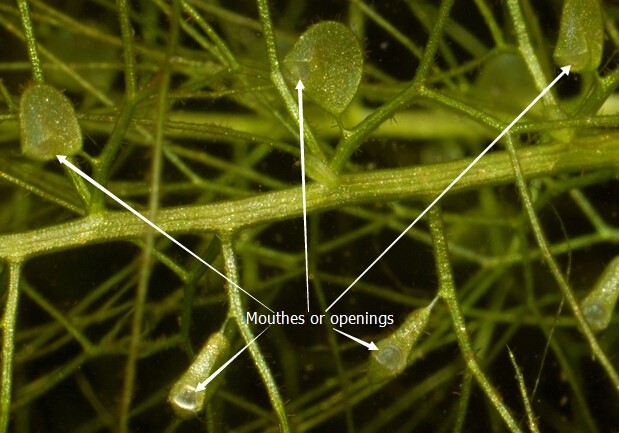
The long, filiform usually branched, antennae guide Daphnia to the trapdoors and trigger hairs of the aquatic bladderwort.
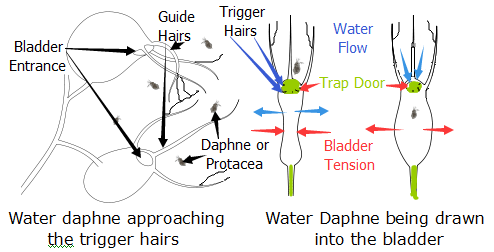
The trapping mechanism of Utricularia is purely mechanical which is triggered by a reaction from the plant in the presence of prey.
The only active mechanism involved is on the hinged door. The water with in the bladder is constantly being removed from the bladder out through the bladder walls by active transport or osmosis.
As water is removed internally, the bladder’s walls are constricted inwards by the lower pressure internally which is created compared to the pressure externally causing the walls to constrict or bend inwards. Any dissolved material inside the bladder will become more concentrated allowing the plant to dissolve more nutrient into the walls which assists in the osmotic pressure differences. The sides of the bladder bend inwards, storing potential energy like a spring. Eventually, no more water can be extracted, and the bladder trap is “fully set.” Technically it is the osmotic pressure, which is the limiting factor.
Extending outwards from the bottom of the trapdoor are several long filiform bristles that are sometimes referred to as trigger hairs or antennae but which have no similarity to the sensitive triggers found in Dionaea and Aldrovanda. These bristles are simply levers. The suction force exerted by the primed bladder on the door is resisted by the adhesion of its flexible bottom against the soft sealing velum. The equilibrium depends quite literally on a hair trigger, and the slightest touch to one of the lever hairs will deform the flexible door lip enough to create a tiny gap, breaking the seal.
Once the seal is disturbed, the bladder walls instantly spring back to a more rounded shape. The door flies open and a column of water rushes into the bladder in an attempt to equalize the pressure. The rushing water creates a slightly higher pressure internally now than what is found externally. The animal which touched the lever, if small enough, is inevitably drawn in and as soon as the trap is filled and the door resumes its closed position. The whole operation is completed in 15 thousandths of a second as measured by Marc Joyeux, Oliver Vincent & Phillipe Marmottant 2008.
Once inside, the prey will be dissolved by digestive secretions. This generally takes from 20 minutes to 6 hours depending on the size of the prey or algae trapped. The time for the bladder to resume its set position can be as little as a few minutes to 58 minutes as measured by Marc Joyeux, Oliver Vincent & Phillipe Marmottant 2008.
The inflorescences of Utricularia biloba are weakly erect, emergent racemes. There are 2 or 20 flowers usually 6 to 14 on the apical half of the raceme which rise 100mm to 450mm above the surface and are born from the central rosette. There 2 to 4 scales are similar to the bracts. The basisolute bracts measure 1.5mm to 2.5mm in length. The bracteoles are absent. The orbicular calyx lobes are unequal and measure 1.5mm to 2mm in length. The lilac-blue to deep blue or deep purple-blue corollas have two white streaks or longitudinal spots on the lower lip. The corolla measures 7mm to 10mm in length. The spur is broadly conical and measures 6mm to 10mm in length. The flowers appear from February to March.
The fruits of Utricularia biloba are small capsules. The capsules are glabrous and elongate on maturity. The green capsules turn deep grey to black when ripe. The seeds are numerous reddish-brown and measure 0.1 mm to 1.6 mm in diameter.
Wildlife:
Utricularia biloba’s bladders feed on Daphne species and other small invertebrate animals in still fresh water.
Cultivation:
Utricularia caerulea is an unusual carnivorous plant for the collector.
It is best grown in a pond that receives morning sun and afternoon shade. This plant can be killed by algae so it is essential to have other aquatic plants in the pond to ensure nutrient levels are always low and balanced. No or low nutrients = No slime or algae.
Propagation:
Seeds: Seeds of Utricularia aurea are difficult if not near impossible to collect. Gather plants from the wild where permits or permission is allowed. Place in a plastic bag with water.
Prepare a pot with either 40mm to 50mm of peat or sphagnum moss beneath 20mm to 30mm of sand to hold it down. Sow fresh seeds directly into sand and cover with 1mm of the sand. Gently place the pot into a tank or pond with 150mm of water. Alternatively place the material collected earlier and place on the pot and hold down with pin clips opened out or hair pins spread apart.
Do not fertilize but feed Daphne species or other small invertebrate animals.
Further Comments from Readers:
“Hi reader, it seems you use The Bible of Botany a lot. That’s great as we have great pleasure in bringing it to you! It’s a little awkward for us to ask, but our first aim is to purchase land approximately 1,600 hectares to link several parcels of N.P. into one at The Pinnacles NSW Australia, but we need your help. We’re not salespeople. We’re amateur botanists who have dedicated over 30 years to saving the environment in a practical way. We depend on donations to reach our goal. If you donate just $5, the price of your coffee this Sunday, We can help to keep the planet alive in a real way and continue to bring you regular updates and features on Australian plants all in one Botanical Bible. Any support is greatly appreciated. Thank you.”
In the spirit of reconciliation we acknowledge the Bundjalung, Gumbaynggirr and Yaegl and all aboriginal nations throughout Australia and their connections to land, sea and community. We pay our respect to their Elders past, present and future for the pleasures we have gained.
Utricularia caerulea
Classification:
Unranked: Eudicots
Class: Asterids
Order: Lamiales
Family: Lentibulariaceae
Genus: From Póteros which is Ancient Greek for a leather pouch and later Urtricularia which is Latin for a raft floating on leather bladders. It refers to plants, which have specialized leaves, which resemble bladders.
Specie: From Caerulus, which is Latin for deep blue. It refers to a structure or organ, which is deep blue in colour.
Sub specie:
Common Name: Blue Bladderwort.
Distribution:
Utricularia caerulea is found north of a line from the Kimberley Range in far north western, Western Australia to Woolgoolga and red Rock in far north eastern coastal New South Wales. It is rare in the inland regions away from the coast.
https://avh.ala.org.au/occurrences/search?taxa=Utricularia+caerulea#tab_mapView
Habitat Aspect Climate:
Utricularia caerulea prefers partial shade to full sun. It grows in the open, adjacent to and on the margins of fresh water lakes, ponds, billabongs, swamps, wallums and backwaters. The plants often develop underground tubers where water is seasonal re sprouting once rains water return and fill the water ways. The altitude ranges from 5 meters ASL to 280 meters ASL.
The air temperatures range from minus 1 degree in July to 42 degrees in January.
The rainfall ranges from lows of 300mm to 3200mm average per annum.
Soil Requirements:
Utricularia caerulea prefers most types of sandy loams through to coarse silts. The soils are usually derived from accumulated beach sands or at times sandy alluvial deposits. The soils pH ranges from 6pH to 7pH. It tolerates waterlogged soils growing in permanently wet locations. Non saline soils to moderately saline soils are tolerated.
Height & Spread:
Wild Plants: 0.2m to 0.3m by 0.03m to 0.05m.
Characteristics:
Utricularia caerulea usually grow as stoloniferous, terrestrial or sub aquatic perennial or at times as an annual herb in wet locations. The yellowish-green to lime-green terete stems are straight and short.
The oblanceolate leaves of Utricularia biloba are simple and measure 5mm to 12mm in length by 1mm to 2mm in width. The bases are cuneate while the apexes are narrow acute. The concolourous laminas are mid yellow-green to lime-green, dull to semi glossy, glabrous. The leaf margins are entire. The mid vein and main laterals are not evident.
The dimorphic trap leaves of Utricularia caerulea are positioned on the stolons and leaves. They are ovoidal to broad-ovoid and measure 1mm to 3mm in length. The larger traps have lateral openings which are long with a long, acute beak while the smaller traps lateral openings have a short tooth.
The alternate, terete leaves of Utricularia caerulea are pinnate leaves are divided equally from the base into 2 equal primary segments, each with pinnately divided terete leaflets. The leaves measure 15mm to 40mm in length by 1mm to 2mm in diameter while the filiform pinnate segments measure 8mm to 20mm in length overall and the ultimate segments measure 5mm to 10mm in length. The petioles measures 1mm to 2mm in length. The acicular leaves are not swollen at the bases while the apexes are narrow acute. The concolourous laminas are mid yellow-green to lime-green, dull to semi glossy, glabrous to sparsely covered in reddish hirsute hairs. The leaf margins are entire. The mid vein and main laterals are not evident.
The dimorphic trap leaves of Utricularia caerulea are ovoid and measure 0.5mm to 2.5mm in length while the openings are either lateral or basal.
Utricularia caerulea are carnivorous plants that have developed very special leaf structure for the purpose of catching small prey. It is generally agreed by most botanists and enthusiasts that the species within the Utricularia genus are the most sophisticated of all plants. The plants are known to feed on diatoms, blue-green algae, green algae and most types unicellular protozoa that venture too close. Plants with larger bladders have been known to trap and dissolve mosquito larvae.
According to Marianne Peroutka, Wolfram Adlassnig, Michael Volgger, Thomas Lendl, Walter G. Url & Irene K. Lichtscheidl Utricularia up to 80% of the nutrient uptake is via algae with 20% being animal via microscopic or minute invertebrates like daphne.
The leaf traps are numerous near the base of the leaves and are obliquely ovoid to oblong-ovoidal. They measure 1mm to 4mm in length. The dimorphic openings can be lateral or basal.
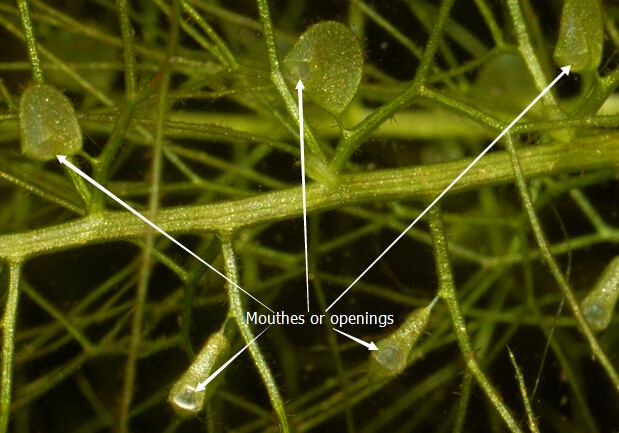
The long, filiform usually branched, antennae guide Daphnia to the trapdoors and trigger hairs of the aquatic bladderwort.
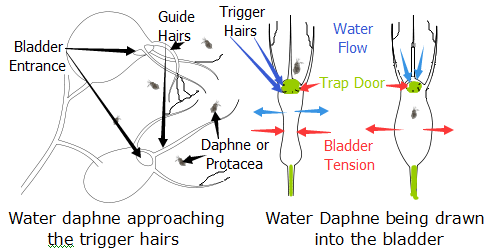
The trapping mechanism of Utricularia is purely mechanical which is triggered by a reaction from the plant in the presence of prey.
The only active mechanism involved is on the hinged door. The water with in the bladder is constantly being removed from the bladder out through the bladder walls by active transport or osmosis.
As water is removed internally, the bladder’s walls are constricted inwards by the lower pressure internally which is created compared to the pressure externally causing the walls to constrict or bend inwards. Any dissolved material inside the bladder will become more concentrated allowing the plant to dissolve more nutrient into the walls which assists in the osmotic pressure differences. The sides of the bladder bend inwards, storing potential energy like a spring. Eventually, no more water can be extracted, and the bladder trap is “fully set.” Technically it is the osmotic pressure, which is the limiting factor.
Extending outwards from the bottom of the trapdoor are several long filiform bristles that are sometimes referred to as trigger hairs or antennae but which have no similarity to the sensitive triggers found in Dionaea and Aldrovanda. These bristles are simply levers. The suction force exerted by the primed bladder on the door is resisted by the adhesion of its flexible bottom against the soft sealing velum. The equilibrium depends quite literally on a hair trigger, and the slightest touch to one of the lever hairs will deform the flexible door lip enough to create a tiny gap, breaking the seal.
Once the seal is disturbed, the bladder walls instantly spring back to a more rounded shape. The door flies open and a column of water rushes into the bladder in an attempt to equalize the pressure. The rushing water creates a slightly higher pressure internally now than what is found externally. The animal which touched the lever, if small enough, is inevitably drawn in and as soon as the trap is filled and the door resumes its closed position. The whole operation is completed in 15 thousandths of a second as measured by Marc Joyeux, Oliver Vincent & Phillipe Marmottant 2008.
Once inside, the prey will be dissolved by digestive secretions. This generally takes from 20 minutes to 6 hours depending on the size of the prey or algae trapped. The time for the bladder to resume its set position can be as little as a few minutes to 58 minutes as measured by Marc Joyeux, Oliver Vincent & Phillipe Marmottant 2008.
The inflorescences of Utricularia caerulea are weakly erect, emergent racemes. There are 1 or 20 flowers on a raceme which are both distant and congested along the raceme which rises 50mm to 300mm above the ground surface. They are born singularly from the terminals. The numerous scales are similar to the bracts while the basisolute bracts are basifixed and measure1.5mm to 3mm in length. The basisolute bracteoles measures 1.5mm to 3mm in length. The calyx lobes are unequal, ovate to oblong and measure 1.5mm to 3mm in length. The white, yellowish to pink, or pale to deep violet corolla is streaked in yellow on lower lip. The corolla measures 2mm to 9mm in length. The narrow conical spur measures 4mm to 11mm in length. The flowers appear from August to April.
The fruits of Utricularia caerulea are small capsules. The capsules are glabrous and elongate on maturity. The green capsules turn deep grey to black when ripe. The seeds are numerous reddish-brown and measure 0.1 mm to 1.6 mm in diameter.
Wildlife:
Utricularia caerulea’s bladders feed on Daphne species and other small invertebrate animals in still fresh water.
Cultivation:
Utricularia dichotoma is an unusual carnivorous plant for the collector.
If you are lucky enough to have it growing on your black it is worthwhile protecting it as it is a an annual which appears following good rainfall. Plants are best grown in conjunction with other marsh plants like Drosera species.
Propagation:
Seeds: Seeds of Utricularia aurea are difficult if not near impossible to collect. Gather plants from the wild where permits or permission is allowed. Place in a plastic bag with water.
Prepare a pot with either 40mm to 50mm of peat or sphagnum moss beneath 20mm to 30mm of sand to hold it down. Sow fresh seeds directly into sand and cover with 1mm of the sand. Gently place the pot into a tank or pond with 150mm of water. Alternatively place the material collected earlier and place on the pot and hold down with pin clips opened out or hair pins spread apart.
Do not fertilize.
Further Comments from Readers:
“Hi reader, it seems you use The Bible of Botany a lot. That’s great as we have great pleasure in bringing it to you! It’s a little awkward for us to ask, but our first aim is to purchase land approximately 1,600 hectares to link several parcels of N.P. into one at The Pinnacles NSW Australia, but we need your help. We’re not salespeople. We’re amateur botanists who have dedicated over 30 years to saving the environment in a practical way. We depend on donations to reach our goal. If you donate just $5, the price of your coffee this Sunday, We can help to keep the planet alive in a real way and continue to bring you regular updates and features on Australian plants all in one Botanical Bible. Any support is greatly appreciated. Thank you.”
In the spirit of reconciliation we acknowledge the Bundjalung, Gumbaynggirr and Yaegl and all aboriginal nations throughout Australia and their connections to land, sea and community. We pay our respect to their Elders past, present and future for the pleasures we have gained.
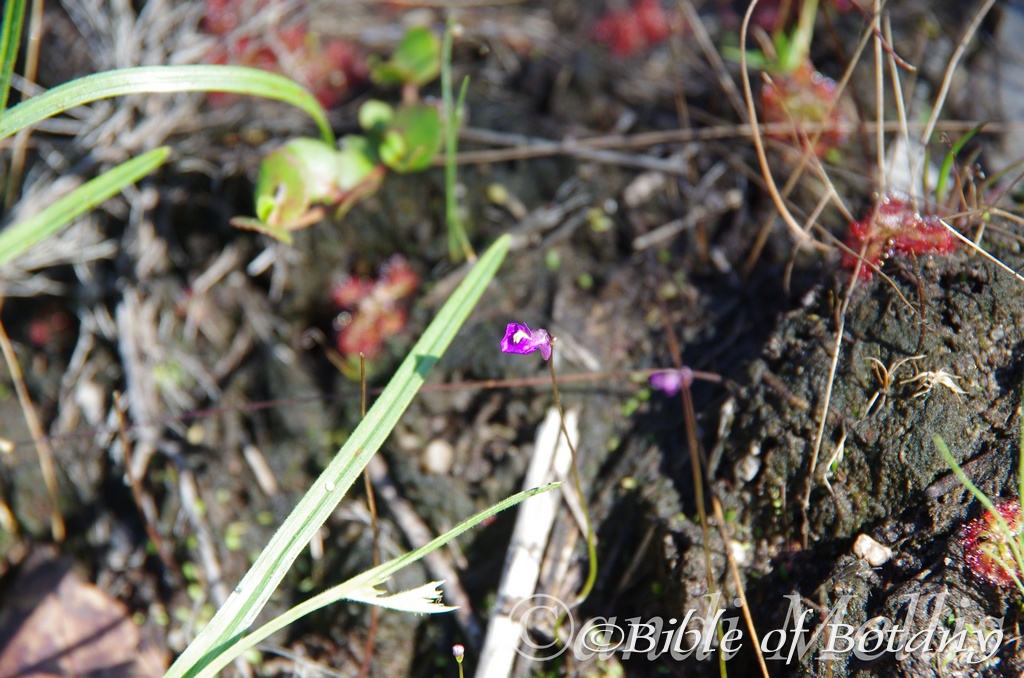
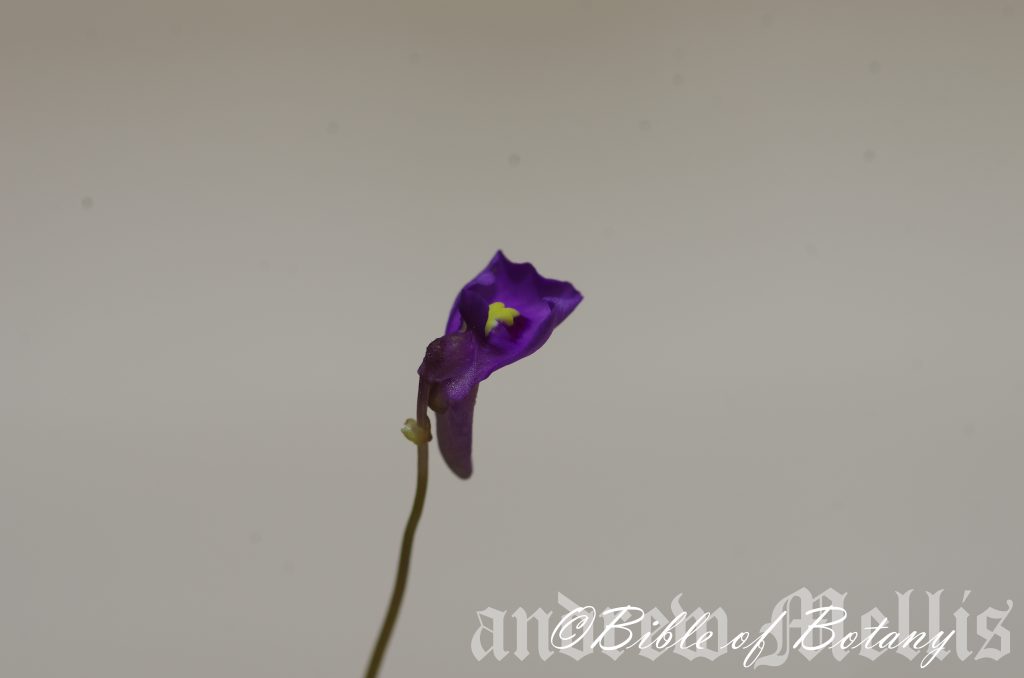
The Pinnacles NSW
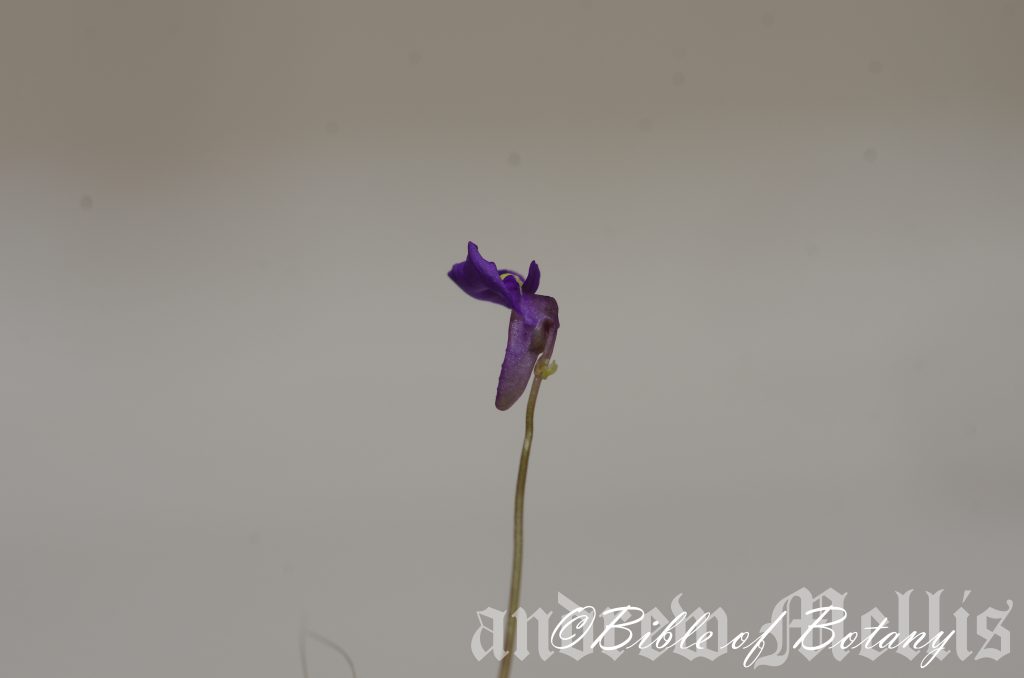
The Pinnacles NSW
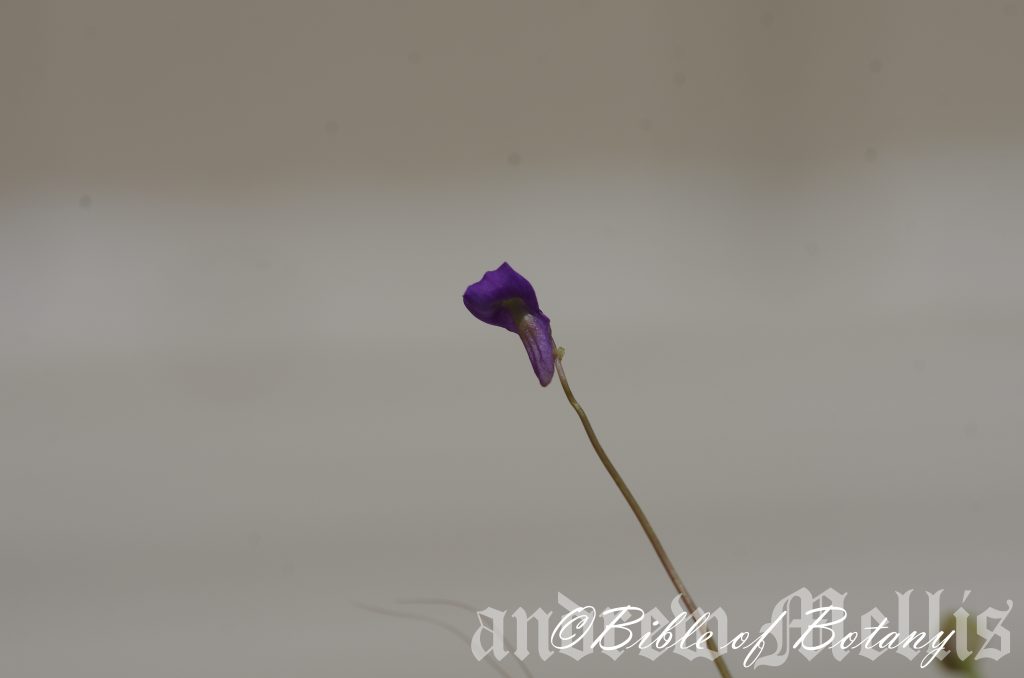
The Pinnacles NSW
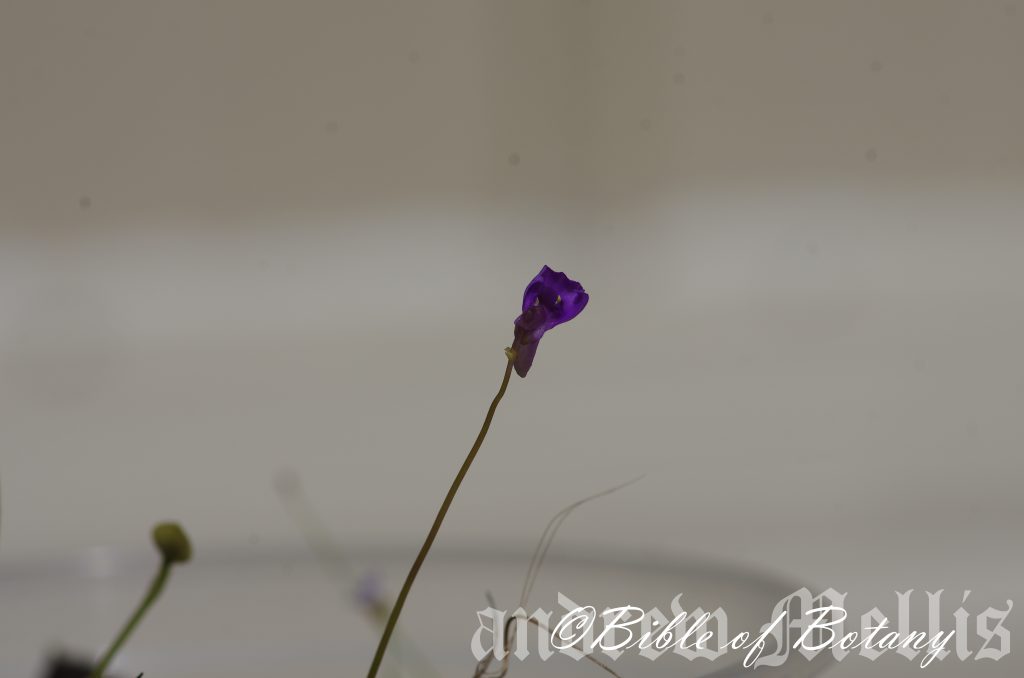
The Pinnacles NSW
Utricularia dichotoma
Classification:
Unranked: Eudicots
Class: Asterids
Order: Lamiales
Family: Lentibulariaceae
Genus: From Póteros which is Ancient Greek for a leather pouch and later Urtricularia which is Latin for a raft floating on leather bladders. It refers to plants, which have specialized leaves, which resemble bladders.
Specie: From Dikos, which is Ancient Greek for double and Khotomos which is Ancient Greek or Chotomos which is Latin for to fork. It refers branches, leaves, fronds or at times other organs, which divide like the prongs on a fork, equally two at a time.
Sub specie:
Common Name:
Distribution:
Utricularia dichotoma is found in the swamps on the Kallbarri Geraldton Sand Plains, The Swan River around Perth, Gnowangerup and The Esperance Plains on the western coastal Plains of south West, Western Australia.
It is found south and east of a line from Hann’s Tableland and Soda Spring Gamboola near Chillagoe in north east Queensland Kangaroo Island in south eastern South Australia.
It is also found on Flinders Island and most of Tasmania except for the highest points in the Central Highlands.
https://avh.ala.org.au/occurrences/search?taxa=Utricularia+dichotoma#tab_mapView
Habitat Aspect Climate:
Utricularia dichotoma prefers partial shade to full sun. It grows in the open, adjacent to and on the margins of fresh water lakes, ponds, billabongs, swamps, wallums, backwaters and along seepages lines. The plants often develop underground tubers where water is seasonal re sprouting once rains water return and fill the water ways. The altitude ranges from 5 meters ASL to 280 meters ASL.
The air temperatures range from minus 7 degrees in July to 39 degrees in January.
The rainfall ranges from lows of 400mm to 2000mm average per annum.
Soil Requirements:
Utricularia dichotoma prefers most types of sandy loams through to coarse silts. The soils are usually derived from accumulated beach sands or at times sandy alluvial deposits. The soils pH ranges from 5.5pH to 7pH. It tolerates waterlogged soils growing in permanently wet locations. Non saline soils to moderately saline soils are tolerated.
Height & Spread:
Wild Plants: 0.2m to 0.3m by 0.03m to 0.05m.
Characteristics:
Utricularia dichotoma grows as a terrestrial. The yellowish-green to lime-green terete stems are short and erect with fleshy white roots.
The linear to obovate, leaves of Utricularia dichotoma are simple and measure 5mm to 40mm in length by 1mm to 5mm in width. The bases are tapered to cuneate while the apexes are narrow acute. The concolourous laminas are mid yellow-green to lime-green, dull to semi glossy, glabrous. The leaf margins are entire. The mid vein and main laterals are not evident.
The dimorphic trap leaves of Utricularia dichotoma are positioned on the stolons. The traps are globose to ovoidal and measure 1mm to 5mm in length while openings are lateral.
Utricularia dichotoma are carnivorous plants that have developed very special leaf structure for the purpose of catching small prey. It is generally agreed by most botanists and enthusiasts that the species within the Utricularia genus are the most sophisticated of all plants. The plants are known to feed on diatoms, blue-green algae, green algae and most types unicellular protozoa that venture too close. Plants with larger bladders have been known to trap and dissolve mosquito larvae.
According to Marianne Peroutka, Wolfram Adlassnig, Michael Volgger, Thomas Lendl, Walter G. Url & Irene K. Lichtscheidl Utricularia up to 80% of the nutrient uptake is via algae with 20% being animal via microscopic or minute invertebrates like daphne.
The leaf traps are numerous near the base of the leaves and are obliquely ovoid to oblong-ovoidal. They measure 1mm to 4mm in length. The dimorphic openings can be lateral or basal.
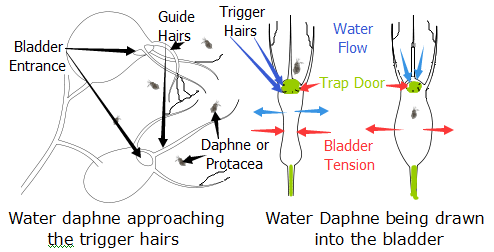
The trapping mechanism of Utricularia are purely mechanical which is triggered by a reaction from the plant in the presence of prey.
The only active mechanism involved is on the hinged door. The water with in the bladder is constantly being removed from the bladder out through the bladder walls by active transport or osmosis.
As water is removed internally, the bladder’s walls are constricted inwards by the lower pressure internally which is created compared to the pressure externally causing the walls to constrict or bend inwards. Any dissolved material inside the bladder will become more concentrated allowing the plant to dissolve more nutrient into the walls which assists in the osmotic pressure differences. The sides of the bladder bend inwards, storing potential energy like a spring. Eventually, no more water can be extracted, and the bladder trap is “fully set.” Technically it is the osmotic pressure, which is the limiting factor.
Extending outwards from the bottom of the trapdoor are several long filiform bristles that are sometimes referred to as trigger hairs or antennae but which have no similarity to the sensitive triggers found in Dionaea and Aldrovanda. These bristles are simply levers. The suction force exerted by the primed bladder on the door is resisted by the adhesion of its flexible bottom against the soft sealing velum. The equilibrium depends quite literally on a hair trigger, and the slightest touch to one of the lever hairs will deform the flexible door lip enough to create a tiny gap, breaking the seal.
Once the seal is disturbed, the bladder walls instantly spring back to a more rounded shape. The door flies open and a column of water rushes into the bladder in an attempt to equalize the pressure. The rushing water creates a slightly higher pressure internally now than what is found externally. The animal which touched the lever, if small enough, is inevitably drawn in and as soon as the trap is filled and the door resumes its closed position. The whole operation is completed in 15 thousandths of a second as measured by Marc Joyeux, Oliver Vincent & Phillipe Marmottant 2008.
Once inside, the prey will be dissolved by digestive secretions. This generally takes from 20 minutes to 6 hours depending on the size of the prey or algae trapped. The time for the bladder to resume its set position can be as little as a few minutes to 58 minutes as measured by Marc Joyeux, Oliver Vincent & Phillipe Marmottant 2008.
The inflorescences of Utricularia dichotoma are solitary or with several together and erect racemes. There are 1 or 9 flowers on a raceme which rise 50mm to 500mm above the ground surface and are born from the terminals or from short lateral growths along the stems. The flowers are opposite in pairs or whorls of 3.The scales are absent. The basifixed bracts and bracteoles are similar. The bases are distinctly but usually only shortly basisolute and measure 1.5mm to 2mm in length. The calyx lobes are unequal, orbicular and measure 2mm to 5mm in length. The deep violet corolla has 2 or 3 conspicuous yellow central ridges flanked by less conspicuous violet ridges. The corolla measures 12mm to 22mm in length. The narrow, cylindrical spur measures 8mm to 18mm in length. The flowers appear from August to May.
The fruits of Utricularia dichotoma are small capsules. The capsules are glabrous and elongate on maturity. The green capsules turn deep purple-grey when ripe. The seeds are numerous reddish-brown and measure 0.1 mm to 1.5 mm in diameter.
Wildlife:
Utricularia dichotoma’s bladders feed on Daphne species and other small invertebrate animals in still fresh water.
Cultivation:
Utricularia dichotoma is an unusual carnivorous plant for the collector.
If you are lucky enough to have it growing on your black it is worthwhile protecting it as it is a an annual which appears following good rainfall. Plants are best grown in conjunction with other marsh plants like Drosera species.
Propagation:
Seeds: Seeds of Utricularia dichotoma are difficult if not near impossible to collect. Gather plants from the wild where permits or permission is allowed. Place in a plastic bag with water.
Prepare a pot with either 40mm to 50mm of peat or sphagnum moss beneath 20mm to 30mm of sand to hold it down. Sow fresh seeds directly into sand and cover with 1mm of the sand. Gently place the pot into a tank or pond with 150mm of water. Alternatively place the material collected earlier and place on the pot and hold down with pin clips opened out or hair pins spread apart.
Do not fertilize but feed them Daphne species or other similar size invertebrate animals.
Further Comments from Readers:
“Hi reader, it seems you use The Bible of Botany a lot. That’s great as we have great pleasure in bringing it to you! It’s a little awkward for us to ask, but our first aim is to purchase land approximately 1,600 hectares to link several parcels of N.P. into one at The Pinnacles NSW Australia, but we need your help. We’re not salespeople. We’re amateur botanists who have dedicated over 30 years to saving the environment in a practical way. We depend on donations to reach our goal. If you donate just $5, the price of your coffee this Sunday, We can help to keep the planet alive in a real way and continue to bring you regular updates and features on Australian plants all in one Botanical Bible. Any support is greatly appreciated. Thank you.”
In the spirit of reconciliation we acknowledge the Bundjalung, Gumbaynggirr and Yaegl and all aboriginal nations throughout Australia and their connections to land, sea and community. We pay our respect to their Elders past, present and future for the pleasures we have gained.
Utricularia gibba
Classification:
Unranked: Eudicots
Class: Asterids
Order: Lamiales
Family: Lentibulariaceae
Genus: From Póteros which is Ancient Greek for a leather pouch and later Urtricularia which is Latin for a raft floating on leather bladders. It refers to plants, which have specialized leaves, which resemble bladders.
Specie: From Gibbosum, which is Latin for to be swollen on one side. It refers to bladders, which swell on one side when an insects is trapped.
Sub specie:
Common Name: Floating Bladderwort.
Distribution:
Utricularia gibba is found around the coast and adjacent areas from Culla Culla Creek on Dampier Peninsula in north west, Western Australia to Port Phillip Bay in southern Victoria extending inland as far as Riversleigh on the Gregory River in north Queensland.
It is also found along the Swan River Plains in Western Australia, The Torrens River Plains in South Australia and the Derwent River in Tasmania indicating that it may be more widespread than the maps indicate.
https://avh.ala.org.au/occurrences/search?taxa=Utricularia+gibba#tab_mapView
Habitat Aspect Climate:
Utricularia gibba prefers partial shade to full sun. It grows in fresh water lakes, ponds, billabongs, swamps and backwaters. The plants often develop underground tubers where water is seasonal re sprouting once rains return and fill the water ways. The altitude ranges from 5 meters ASL to 400 meters ASL.
The air temperatures range from minus 3 degree in July to 42 degrees in January.
The rainfall ranges from lows of 550mm to 3000mm average per annum.
Soil Requirements:
Utricularia gibba prefers most types of sandy loams through to heavy silts and muds. The soils are derived from most types of rocks including basalts, sandstones, metamorphic, laterites, shale, and limestone. The soils pH ranges from 5.2pH to 7pH. It tolerates waterlogged soils growing permanently in water. Non saline soils to moderately saline soils are tolerated.
Height & Spread:
Wild Plants: 0.6m to 1.5m by 0.05m to 0.1m.
Characteristics:
Utricularia gibba grows as a suspended, aquatic perennial herb in fresh water. The yellowish-green to lime-green terete stems are straight.
The alternate, terete filiform leaves of Utricularia gibba are dichotomously divided with usually 2 primary or rarely 1 primary segments with further branching into 4 or rarely to 8 ultimate segments. The leaves measure 5mm to 15mm in length by 0.5mm to 1mm in diameter. The acicular leaves are not swollen at the bases while the apexes are narrow acute. The concolourous laminas are mid yellow-green to lime-green, dull to semi glossy, glabrous to sparsely covered in reddish hirsute hairs. The leaf margins are entire. The mid vein and main laterals are not evident.
The dimorphic trap leaves of Utricularia gibba are ovoid and measure 0.5mm to 2.5mm in length while the openings are either lateral or basal.
Utricularia gibba are carnivorous plants that have developed very special leaf structure for the purpose of catching small prey. It is generally agreed by most botanists and enthusiasts that the species within the Utricularia genus are the most sophisticated of all plants. The plants are known to feed on diatoms, blue-green algae, green algae and most types unicellular protozoa that venture too close. Plants with larger bladders have been known to trap and dissolve mosquito larvae.
According to Marianne Peroutka, Wolfram Adlassnig, Michael Volgger, Thomas Lendl, Walter G. Url & Irene K. Lichtscheidl Utricularia up to 80% of the nutrient uptake is via algae with 20% being animal via microscopic or minute invertebrates like daphne.
The leaf traps are numerous near the base of the leaves and are obliquely ovoid to oblong-ovoidal. They measure 1mm to 4mm in length. The dimorphic openings can be lateral or basal.
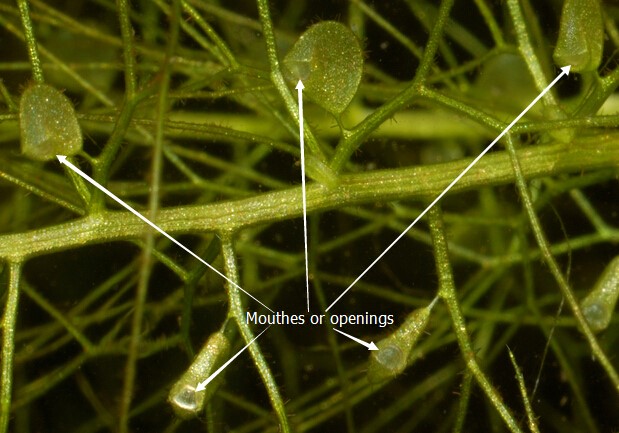
The long, filiform usually branched, antennae guide Daphnia to the trapdoors and trigger hairs of the aquatic bladderwort.
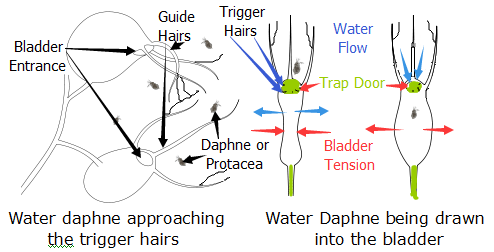
The trapping mechanism of Utricularia is purely mechanical which is triggered by a reaction from the plant in the presence of prey.
The only active mechanism involved is on the hinged door. The water with in the bladder is constantly being removed from the bladder out through the bladder walls by active transport or osmosis.
As water is removed internally, the bladder’s walls are constricted inwards by the lower pressure internally which is created compared to the pressure externally causing the walls to constrict or bend inwards. Any dissolved material inside the bladder will become more concentrated allowing the plant to dissolve more nutrient into the walls which assists in the osmotic pressure differences. The sides of the bladder bend inwards, storing potential energy like a spring. Eventually, no more water can be extracted, and the bladder trap is “fully set.” Technically it is the osmotic pressure that is the limiting factor.
Extending outwards from the bottom of the trapdoor are several long filiform bristles that are sometimes referred to as trigger hairs or antennae but which have no similarity to the sensitive triggers found in Dionaea and Aldrovanda. These bristles are simply levers. The suction force exerted by the primed bladder on the door is resisted by the adhesion of its flexible bottom against the soft sealing velum. The equilibrium depends quite literally on a hair trigger, and the slightest touch to one of the lever hairs will deform the flexible door lip enough to create a tiny gap, breaking the seal.
Once the seal is disturbed, the bladder walls instantly spring back to a more rounded shape. The door flies open and a column of water rushes into the bladder in an attempt to equalize the pressure. The rushing water creates a slightly higher pressure internally now than what is found externally. The animal which touched the lever, if small enough, is inevitably drawn in and as soon as the trap is filled and the door resumes its closed position. The whole operation is completed in 15 thousandths of a second as measured by Marc Joyeux, Oliver Vincent & Phillipe Marmottant 2008.
Once inside, the prey will be dissolved by digestive secretions. This generally takes from 20 minutes to 6 hours depending on the size of the prey or algae trapped. The time for the bladder to resume its set position can be as little as a few minutes to 58 minutes as measured by Marc Joyeux, Oliver Vincent & Phillipe Marmottant 2008.
The inflorescences of Utricularia gibba are usually solitary or at times 2 or more born together or one after the next. The emergent racemes but on rare occasions can be submerged racemes. There are 2 or 6 flowers on a raceme which measures 10mm to 200mm in length and are born from the terminals or from short lateral growths along the stems. There is none, 1 or rarely 2 scales similar to the bracts, half way along the peduncle, while the basifixed bracts measure 1mm to 3mm in length. The bracteoles are absent. The calyx lobes are slightly unequal, broad-ovate to orbicular and measure 1mm to 3mm in length. The bright yellow corolla has scarlet-red lines and spots on the lower lip. The corolla measures 8mm to 25mm in length. The narrow conical spur measures 6mm to 22mm in length. The flowers appear from November to April.
The fruits of Utricularia gibba are small capsules. The capsules are glabrous and elongate on maturity. The green capsules turn deep grey to black when ripe. The seeds are numerous reddish-brown and measure 0.1 mm to 1.6 mm in diameter.
Wildlife:
Utricularia gibba’s bladders feed on Daphne species and other small invertebrate animals in still fresh water.
Cultivation:
Utricularia gibba is an unusual carnivorous plant for the collector. It adapts to large aquariums. In cultivation it grows from 0.5 meters to 1.6 meters in length.
It is best grown in a pond that receives morning sun and afternoon shade. This plant can be killed by algae so it is essential to have other aquatic plants in the pond to ensure nutrient levels are always low and balanced. No or low nutrients = No slime or algae.
Propagation:
Seeds: Seeds of Utricularia aurea are difficult if not near impossible to collect. Gather plants from the wild where permits or permission is allowed. Place in a plastic bag with water.
Prepare a pot with either 40mm to 50mm of peat or sphagnum moss beneath 20mm to 30mm of sand to hold it down. Sow fresh seeds directly into sand and cover with 1mm of the sand. Gently place the pot into a tank or pond with 150mm of water. Alternatively place the material collected earlier and place on the pot and hold down with pin clips opened out or hair pins spread apart.
Do not fertilize but feed it Daphne species or other similar size invertebrate animals.
It is best grown in the open or where the sides are clear but can be successfully grown in a bucket, tank or outside fish pond that is deeper than 150mm in depth with either 40mm to 50mm of peat or sphagnum moss beneath 20mm to 30mm of sand to hold it down. Fill with water then let sit for 24 to 48 hours.
Further Comments from Readers:
“Hi reader, it seems you use The Bible of Botany a lot. That’s great as we have great pleasure in bringing it to you! It’s a little awkward for us to ask, but our first aim is to purchase land approximately 1,600 hectares to link several parcels of N.P. into one at The Pinnacles NSW Australia, but we need your help. We’re not salespeople. We’re amateur botanists who have dedicated over 30 years to saving the environment in a practical way. We depend on donations to reach our goal. If you donate just $5, the price of your coffee this Sunday, We can help to keep the planet alive in a real way and continue to bring you regular updates and features on Australian plants all in one Botanical Bible. Any support is greatly appreciated. Thank you.”
In the spirit of reconciliation we acknowledge the Bundjalung, Gumbaynggirr and Yaegl and all aboriginal nations throughout Australia and their connections to land, sea and community. We pay our respect to their Elders past, present and future for the pleasures we have gained.
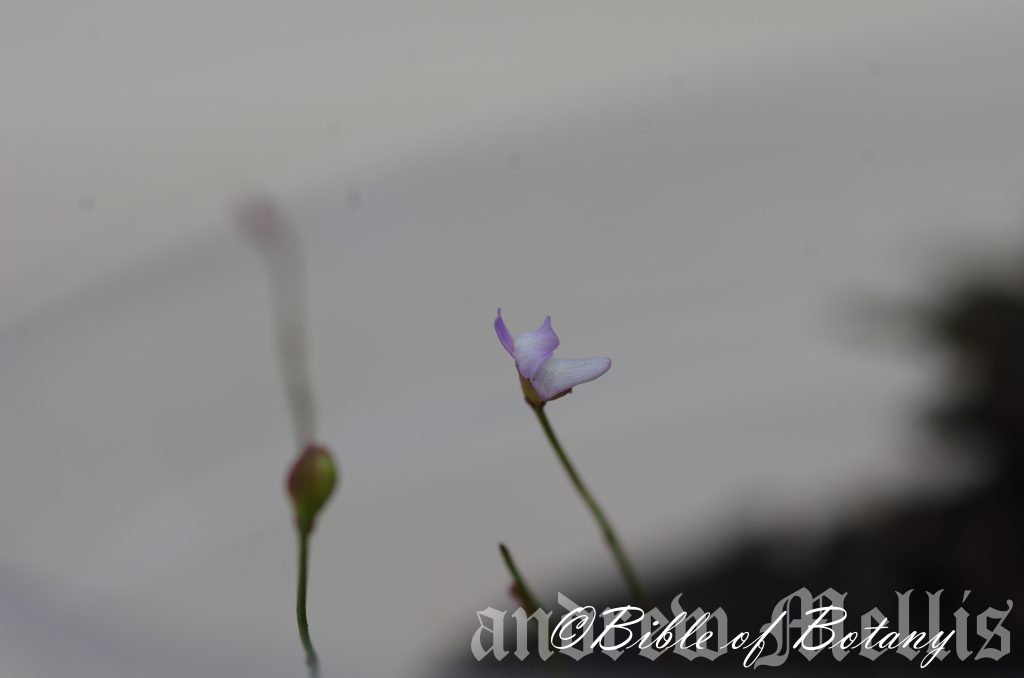
The Pinnacles NSW
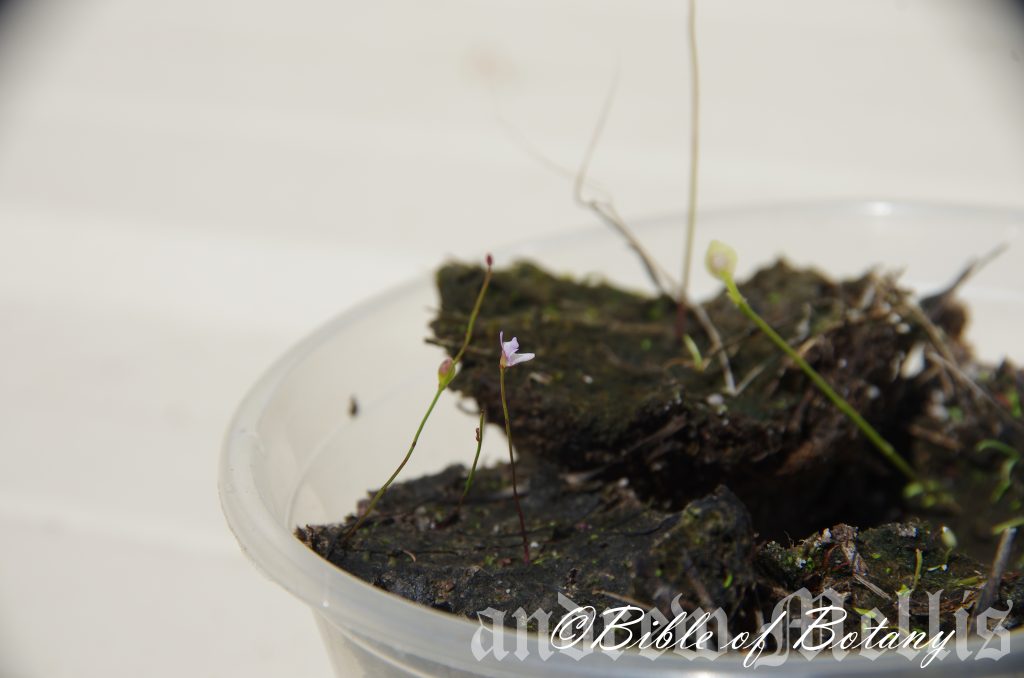
The Pinnacles NSW
Utricularia lateriflora
Classification:
Unranked: Eudicots
Class: Asterids
Order: Lamiales
Family: Lentibulariaceae
Genus: From Póteros which is Ancient Greek for a leather pouch and later Urtricularia which is Latin for a raft floating on leather bladders. It refers to plants, which have specialized leaves, which resemble bladders.
Specie: From Lateralis, which is Latin for the side and Flōris, which is Latin for a flower or Flōs, which is Roman for the goddess of spring and flowers. It refers to flowers, which are produced along one side of the branch or culm.
Sub specie:
Common Name: Small Bladderwort or Tiny Bladderwort.
Distribution:
Utricularia lateriflora is found around the coastal fringe within 100 kilometres from the coast south from Shoalwater Bay in central coastal Queensland to the Victoria Plains in south eastern coastal South Australia. There is a disjunct population further north on Mount Cook and Hope Vale in far north east coastal Queensland.
There is an isolated population between Berry Springs and McMinns lagoon south east of Darwin.
It is also found from the Torrens River south to Yankalilla and Kangaroo Island in south east South Australia.
It is found on the Bass Strait Islands and circumnavigates Tasmania.
https://avh.ala.org.au/occurrences/search?taxa=Utricularia+lateriflora#tab_mapView
Habitat Aspect Climate:
Utricularia lateriflora prefers partial shade to full sun. It grows adjacent to fresh water lakes, ponds, billabongs, swamps and backwaters. The altitude ranges from 5 meters ASL to 650 meters ASL.
The air temperatures range from minus 3 degree in July to 42 degrees in January.
The rainfall ranges from lows of 350mm to 2000mm average per annum.
Soil Requirements:
Utricularia lateriflora prefers most types of sands, sandy loams through to coarse silts or peaty sands. The soils are usually derived from sandy alluvial deposits or accumulated beach sands. The soils pH ranges from 5pH to 6.5pH. It tolerates waterlogged soils growing in permanently wet locations. Non saline soils to moderately saline soils are tolerated.
Height & Spread:
Wild Plants: 0.1m to 0.2m by 0.02m to 0.05m.
Characteristics:
Utricularia lateriflora grows as a small terrestrial, perennial herb in wet sands. The yellowish-green to lime-green terete stems are straight.
The narrow spathulate to narrow oblanceolate leaves of Utricularia lateriflora measure 30mm to 55mm in length by 3mm to 6mm in width. The concolourous laminas are mid green to lime-green, dull to semi glossy and glabrous. The leaf margins are entire while the laminas are slightly resinous above and the mid vein is faintly prominent on the lower lamina.
The trap leaves of Utricularia lateriflora are ovoidal and measure 5mm to 7mm in length while the openings are either lateral or basal.
Utricularia lateriflora are carnivorous plants that have developed very special leaf structure for the purpose of catching small prey. It is generally agreed by most botanists and enthusiasts that the species within the Utricularia genus are the most sophisticated of all plants. The plants are known to feed on diatoms, blue-green algae, green algae and most types unicellular protozoa that venture too close. Plants with larger bladders have been known to trap and dissolve mosquito larvae.
According to Marianne Peroutka, Wolfram Adlassnig, Michael Volgger, Thomas Lendl, Walter G. Url & Irene K. Lichtscheidl Utricularia up to 80% of the nutrient uptake is via algae with 20% being animal via microscopic or minute invertebrates like daphne.
The leaf traps are numerous near the base of the leaves and are obliquely ovoid to oblong-ovoidal. They measure 1mm to 4mm in length. The dimorphic openings can be lateral or basal.
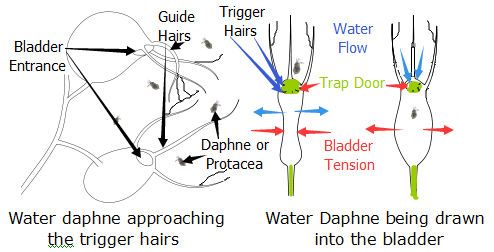
The trapping mechanism of Utricularia is purely mechanical which is triggered by a reaction from the plant in the presence of prey.
The only active mechanism involved is on the hinged door. The water with in the bladder is constantly being removed from the bladder out through the bladder walls by active transport or osmosis.
As water is removed internally, the bladder’s walls are constricted inwards by the lower pressure internally which is created compared to the pressure externally causing the walls to constrict or bend inwards. Any dissolved material inside the bladder will become more concentrated allowing the plant to dissolve more nutrient into the walls which assists in the osmotic pressure differences. The sides of the bladder bend inwards, storing potential energy like a spring. Eventually, no more water can be extracted, and the bladder trap is “fully set.” Technically it is the osmotic pressure that is the limiting factor.
Extending outwards from the bottom of the trapdoor are several long filiform bristles that are sometimes referred to as trigger hairs or antennae but which have no similarity to the sensitive triggers found in Dionaea and Aldrovanda. These bristles are simply levers. The suction force exerted by the primed bladder on the door is resisted by the adhesion of its flexible bottom against the soft sealing velum. The equilibrium depends quite literally on a hair trigger, and the slightest touch to one of the lever hairs will deform the flexible door lip enough to create a tiny gap, breaking the seal.
Once the seal is disturbed, the bladder walls instantly spring back to a more rounded shape. The door flies open and a column of water rushes into the bladder in an attempt to equalize the pressure. The rushing water creates a slightly higher pressure internally now than what is found externally. The animal which touched the lever, if small enough, is inevitably drawn in and as soon as the trap is filled and the door resumes its closed position. The whole operation is completed in 15 thousandths of a second as measured by Marc Joyeux, Oliver Vincent & Phillipe Marmottant 2008.
Once inside, the prey will be dissolved by digestive secretions. This generally takes from 20 minutes to 6 hours depending on the size of the prey or algae trapped. The time for the bladder to resume its set position can be as little as a few minutes to 58 minutes as measured by Marc Joyeux, Oliver Vincent & Phillipe Marmottant 2008.
The emergent, erect inflorescences of Utricularia lateriflora are solitary racemes or at times 2 or more together. There are 3 to 5 flowers on a raceme with 1 to 3 flowers to a bract. The racemes measure 80mm to 200mm in length. The numerous scales are smaller than the bracts while the basifixed bracts measure 1mm to 2mm in length. The bracteoles are longer and narrower than bracts. The calyx lobes are slightly unequal and are elliptical to broad ovate or orbicular and measure 2mm to 3mm in length. The mauve, lilac, purple to violet or rarely white corolla has white or yellow spots near the base of the lower lip. The corolla measures 5mm to 10mm in length. The broad conical spur is longer than the lower lip and measures 6mm to 12mm in length. The flowers appear throughout the year under favourable conditions.
The fruits of Utricularia lateriflora are small ovoidal capsules. The capsules are glabrous and elongate further on maturity. The green capsules turn deep grey to black when ripe. The numerous seeds are reddish-brown and measure 0.1 mm to 1.6 mm in diameter.
Wildlife:
Utricularia lateriflora’s bladders feed on Daphne species and other small invertebrate animals in still fresh water.
Cultivation:
Utricularia lateriflora is an unusual carnivorous plant for the collector.
If you are lucky enough to have it growing on your black it is worthwhile protecting it as it is a an annual which appears following good rainfall. Cultivated plants are best grown in conjunction with other marsh plants like Drosera species.
Propagation:
Seeds: Seeds of Utricularia aurea are difficult if not near impossible to collect. Gather plants from the wild where permits or permission is allowed. Place in a plastic bag with water.
Prepare a pot with either 40mm to 50mm of peat or sphagnum moss beneath 20mm to 30mm of sand to hold it down. Sow fresh seeds directly into sand and cover with 1mm of the sand. Gently place the pot into a tank or pond with 150mm of water. Alternatively place the material collected earlier and place on the pot and hold down with pin clips opened out or hair pins spread apart.
Do not fertilize but feed it Daphne species or other similar size invertebrate animals.
Further Comments from Readers:
“Hi reader, it seems you use The Bible of Botany a lot. That’s great as we have great pleasure in bringing it to you! It’s a little awkward for us to ask, but our first aim is to purchase land approximately 1,600 hectares to link several parcels of N.P. into one at The Pinnacles NSW Australia, but we need your help. We’re not salespeople. We’re amateur botanists who have dedicated over 30 years to saving the environment in a practical way. We depend on donations to reach our goal. If you donate just $5, the price of your coffee this Sunday, We can help to keep the planet alive in a real way and continue to bring you regular updates and features on Australian plants all in one Botanical Bible. Any support is greatly appreciated. Thank you.”
In the spirit of reconciliation we acknowledge the Bundjalung, Gumbaynggirr and Yaegl and all aboriginal nations throughout Australia and their connections to land, sea and community. We pay our respect to their Elders past, present and future for the pleasures we have gained.
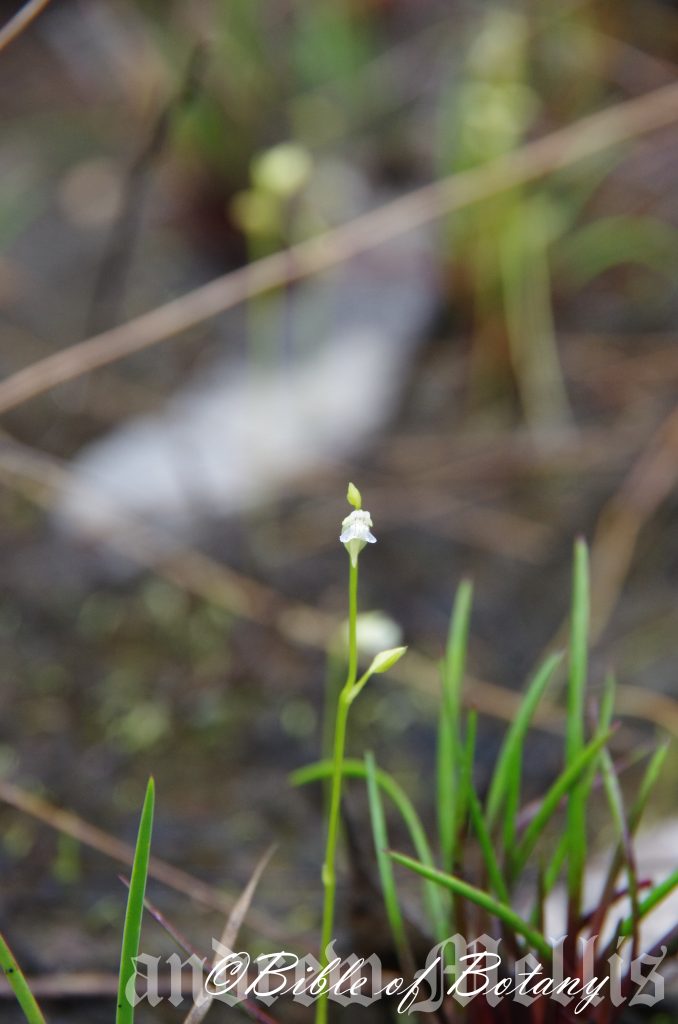
The Pinnacles NSW
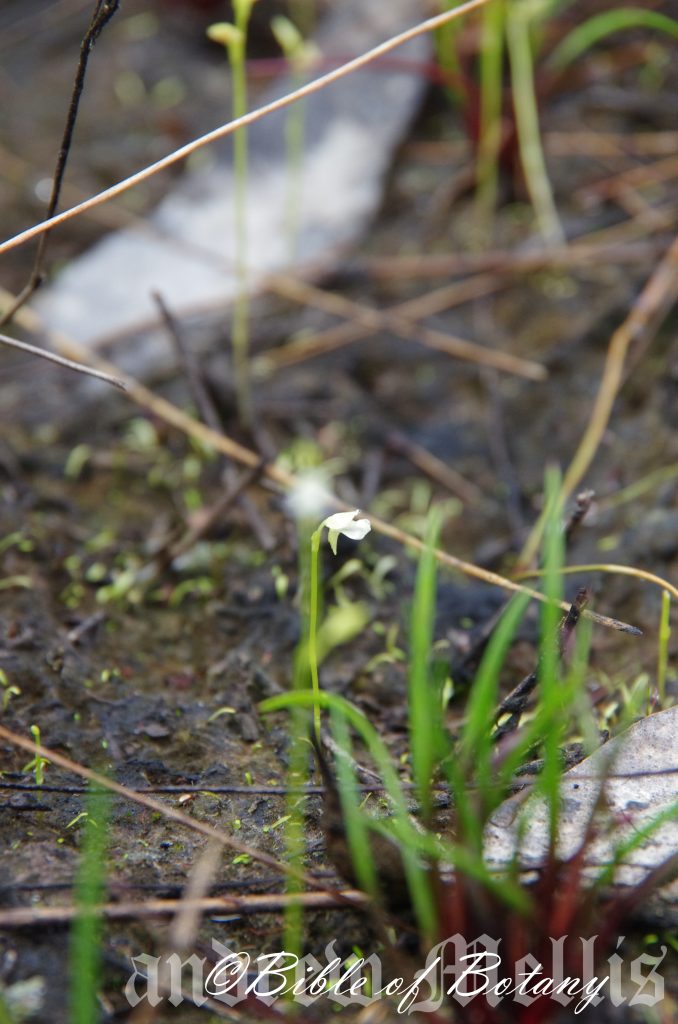
The Pinnacles NSW
Utricularia uliginosa
Classification:
Unranked: Eudicots
Class: Asterids
Order: Lamiales
Family: Lentibulariaceae
Genus: From Póteros which is Ancient Greek for a leather pouch and later Urtricularia which is Latin for a raft floating on leather bladders. It refers to plants, which have specialized leaves, which resemble bladders.
Specie: From Ulignosus, which is Latin for to grow in wet habitats. It refers to plants, which prefer to grow in wet habitats like wallums or swampy places.
Sub specie: Utricularia uliginosa var. alba. From Alphós, which is Ancient Greek or later Albus, which is Latin for white. It refers to plants, usually the flowers which are white. It is the only variety or subspecies found in Australia.
Common Name: Asian Bladderwort.
Distribution:
Utricularia uliginosa is found north of a line from Yellow Stone Creek on the southern Kimberley Ran Yan Gorge on the Northern Territory Queensland border. There are isolated populations on the Blackdown Tablelands and near Taroom.
In the east it is found south from the tip of Cape York Peninsula to in far northern Queensland to Ulladulla in central coastal New South Wales.
It is also found in Borneo, Caroline Islands, South eastern China, Hainan, India, Indonesia, Japan, Java, Korea, Malaya, Marianas, Myanmar, New Caledonia, New Guinea, Nicobar Island, Papua, Sri Lanka, Sumatera, Taiwan, Thailand and Vietnam.
https://avh.ala.org.au/occurrences/search?taxa=Utricularia+ulignosa#tab_mapView
Habitat Aspect Climate:
Utricularia uliginosa prefers partial shade to full sun. It grows in the shallows and adjacent to fresh water lakes, ponds, billabongs, swamps and backwaters. The altitude ranges from 5 meters ASL to 650 meters ASL.
The air temperatures range from minus 3 degree in July to 42 degrees in January.
The rainfall ranges from lows of 550mm to 3200mm average per annum.
Soil Requirements:
Utricularia uliginosa prefers most types of wet, swampy ground, seasonal high water tables and seepages on sands, sandy loams through to medium course silts and muds. The soils are usually derived from sandstones accumulated beach sands or alluvial deposits. The soils pH ranges from 5.2pH to 7pH. It tolerates waterlogged soils growing permanently in water or where high water tables exist. Non saline soils to moderately saline soils are tolerated.
Height & Spread:
Wild Plants: 10mm to 300mm by 0.03m to 0.05m.
Characteristics:
Utricularia uliginosa grows as a terrestrial or sub aquatic, annual or at times a perennial herb in fresh water. The lime-green terete stems are straight.
The linear leaves of Utricularia uliginosa measure 30mm to 55mm in length by 2mm to 6mm in diameter. The concolourous laminas are mid lime-green, dull to semi glossy, glabrous to sparsely covered in white hirsute hairs near the tip. The leaf margins are entire. The mid vein is slightly prominent on the lower lamina and is faintly visible from the upper lamina.

The dimorphic trap leaves of Utricularia australis are found on the root like stems, stolons and leaves. They are globose and measure 1mm to 1.6mm in length while the openings are basal.
Utricularia uliginosa are carnivorous plants that have developed very special leaf structure for the purpose of catching small prey. It is generally agreed by most botanists and enthusiasts that the species within the Utricularia genus are the most sophisticated of all plants. The plants are known to feed on diatoms, blue-green algae, green algae and most types unicellular protozoa that venture too close. Plants with larger bladders have been known to trap and dissolve mosquito larvae.
The only active mechanism involved is on the hinged door. The water with in the bladder is constantly being removed from the bladder out through the bladder walls by active transport or osmosis.
As water is removed internally, the bladder’s walls are constricted inwards by the lower pressure internally which is created compared to the pressure externally causing the walls to constrict or bend inwards. Any dissolved material inside the bladder will become more concentrated allowing the plant to dissolve more nutrient into the walls which assists in the osmotic pressure differences. The sides of the bladder bend inwards, storing potential energy like a spring. Eventually, no more water can be extracted, and the bladder trap is “fully set.” Technically it is the osmotic pressure that is the limiting factor.
Extending outwards from the bottom of the trapdoor are several long filiform bristles that are sometimes referred to as trigger hairs or antennae but which have no similarity to the sensitive triggers found in Dionaea and Aldrovanda. These bristles are simply levers. The suction force exerted by the primed bladder on the door is resisted by the adhesion of its flexible bottom against the soft sealing velum. The equilibrium depends quite literally on a hair trigger, and the slightest touch to one of the lever hairs will deform the flexible door lip enough to create a tiny gap, breaking the seal.
Once the seal is disturbed, the bladder walls instantly spring back to a more rounded shape. The door flies open and a column of water rushes into the bladder in an attempt to equalize the pressure. The rushing water creates a slightly higher pressure internally now than what is found externally. The animal which touched the lever, if small enough, is inevitably drawn in and as soon as the trap is filled and the door resumes its closed position. The whole operation is completed in 15 thousandths of a second as measured by Marc Joyeux, Oliver Vincent & Phillipe Marmottant 2008.
Once inside, the prey will be dissolved by digestive secretions. This generally takes from 20 minutes to 6 hours depending on the size of the prey or algae trapped. The time for the bladder to resume its set position can be as little as a few minutes to 58 minutes as measured by Marc Joyeux, Oliver Vincent & Phillipe Marmottant 2008.
The inflorescences of Utricularia uliginosa are single, erect, emergent racemes. There are 2 or 10 flowers on a raceme which measure 30mm to 300mmin length. The 2 or 3 scales are similar to the basifixed broad-ovate to orbicular and measure 3mm to 5mm in length by the time the fruit ripens. The usually lilac to violet or rarely all white corolla has a paler lip which is streaked with deeper purple and often has a bluish margin. The corolla measures 5mm to 9mm in length. The broad, subulate spur is much paler and measures 5mm to 9mm in length. The flowers appear throughout the year under favourable conditions.

The fruits of Utricularia uliginosa are small capsules. The capsules are glabrous and elongate on maturity. The green capsules turn deep grey to black when ripe. The seeds are numerous reddish-brown and measure 0.1 mm to 1.6 mm in diameter.
Wildlife:
Utricularia uliginosa’s bladders feed on Daphne species and other small invertebrate animals in still fresh water.
Cultivation:
Utricularia uliginosa is an unusual carnivorous plant for the collector. It would probably adapt well to a well lit terrarium.
If you are lucky enough to have it growing on your black it is worthwhile protecting it as it is a an annual which appears following good rainfall. Plants are best grown in conjunction with other marsh plants like Drosera species.
Propagation:
Seeds: Seeds of Utricularia uliginosa are difficult if not near impossible to collect. Gather plants from the wild where permits or permission is allowed. Place in a plastic bag with water.
Prepare a pot with either 40mm to 50mm of peat or sphagnum moss beneath 20mm to 30mm of sand to hold it down. Sow fresh seeds directly into sand and cover with 1mm of the sand. Gently place the pot into a tank or pond with 150mm of water. Alternatively place the material collected earlier and place on the pot and hold down with pin clips opened out or hair pins spread apart.
Do not fertilize but feed on Daphne species and other small invertebrate animals in still fresh water.
Further Comments from Readers:
“Hi reader, it seems you use The Bible of Botany a lot. That’s great as we have great pleasure in bringing it to you! It’s a little awkward for us to ask, but our first aim is to purchase land approximately 1,600 hectares to link several parcels of N.P. into one at The Pinnacles NSW Australia, but we need your help. We’re not salespeople. We’re amateur botanists who have dedicated over 30 years to saving the environment in a practical way. We depend on donations to reach our goal. If you donate just $5, the price of your coffee this Sunday, We can help to keep the planet alive in a real way and continue to bring you regular updates and features on Australian plants all in one Botanical Bible. Any support is greatly appreciated. Thank you.”
In the spirit of reconciliation we acknowledge the Bundjalung, Gumbaynggirr and Yaegl and all aboriginal nations throughout Australia and their connections to land, sea and community. We pay our respect to their Elders past, present and future for the pleasures we have gained.
Utricularia uniflora
Classification:
Unranked: Eudicots
Class: Asterids
Order: Lamiales
Family: Lentibulariaceae
Genus: From Póteros which is Ancient Greek for a leather pouch and later Urtricularia which is Latin for a raft floating on leather bladders. It refers to plants, which have specialized leaves, which resemble bladders.
Specie: From Oîos, which is Ancient Greek or ūnum, which is Latin for one or a single unit and Flōris, which is Latin for a flower or Flōs, which is the Roman goddess for spring and flowers. It refers to plants, which have a single stem and a single head of flowers or more often a single flower.
Sub specie:
Common Name:
Distribution:
Utricularia uniflora is found south from Boorook near Tenterfield in north eastern New South Wales to Mallacoota in coastal north eastern Gippsland in Victoria.
It is also found south from Circular Head to Bathurst Harbour in western Tasmania.
https://avh.ala.org.au/occurrences/search?taxa=Utricularia+uniflora#tab_mapView
Habitat Aspect Climate:
Utricularia uniflora grows in fresh bogs, adjacent to water lakes, ponds, billabongs, swamps, backwaters and wallums where high water tables exist. The plants often develop underground tubers where water is seasonal re sprouting once rains water return and fill the water ways. The altitude ranges from 3 meters ASL to 680 meters ASL.
The air temperatures range from minus 5 degree in July to 36 degrees in January.
The rainfall ranges from lows of 600mm to 3000mm average per annum.
Soil Requirements:
Utricularia uniflora prefers most types of sandy loams through to light clays, light silts to heavy silts and muds. The soils are usually derived from most types of rocks including basalts, sandstones, metamorphic, laterites and shale. The soils pH ranges from 5.2pH to 7.2pH. It tolerates waterlogged soils often growing permanently in shallow water. Non saline soils to moderately saline soils are tolerated.
Height & Spread:
Wild Plants: 0.1m to 0.3m by 0.02m to 0.05m
Characteristics:
Utricularia uniflora grows as a terrestrial perennial herb in fresh water bogs and seepages. The yellowish-green to lime-green terete stolons are straight.
The obovate to broad elliptical leaves of Utricularia uniflora measure 4mm to 8mm in length by 1.5mm to 3mm in width. The bases are tapering while the apexes are obtuse. The concolourous laminas are mid yellow-green to deep green, semi glossy, glabrous. The leaf margins are entire while the 2 to 4 parallel veins are slightly prominent on the lower lamina and faintly visible on the upper lamina.
The globose trap leaves of Utricularia uniflora measure 0.8mm to 1.5mm in length while the openings are either lateral.
Utricularia uniflora are carnivorous plants that have developed very special leaf structure for the purpose of catching small prey. It is generally agreed by most botanists and enthusiasts that the species within the Utricularia genus are the most sophisticated of all plants. The plants are known to feed on diatoms, blue-green algae, green algae and most types unicellular protozoa that venture too close. Plants with larger bladders have been known to trap and dissolve mosquito larvae.
According to Marianne Peroutka, Wolfram Adlassnig, Michael Volgger, Thomas Lendl, Walter G. Url & Irene K. Lichtscheidl Utricularia up to 80% of the nutrient uptake is via algae with 20% being animal via microscopic or minute invertebrates like daphne.
The leaf traps are numerous near the base of the leaves and are obliquely ovoid to oblong-ovoidal. They measure 1mm to 4mm in length. The dimorphic openings can be lateral or basal.
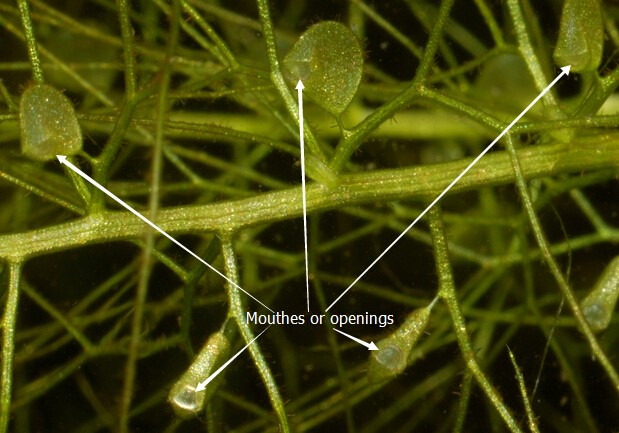
The long, filiform usually branched, antennae guide Daphnia to the trapdoors and trigger hairs of the aquatic bladderwort.
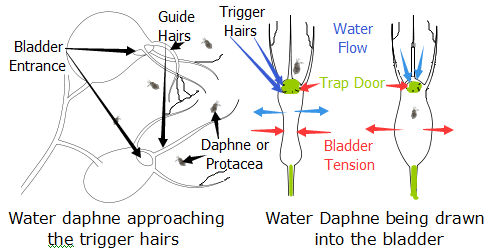
The trapping mechanism of Utricularia is purely mechanical which is triggered by a reaction from the plant in the presence of prey.
The only active mechanism involved is on the hinged door. The water with in the bladder is constantly being removed from the bladder out through the bladder walls by active transport or osmosis.
As water is removed internally, the bladder’s walls are constricted inwards by the lower pressure internally which is created compared to the pressure externally causing the walls to constrict or bend inwards. Any dissolved material inside the bladder will become more concentrated allowing the plant to dissolve more nutrient into the walls which assists in the osmotic pressure differences. The sides of the bladder bend inwards, storing potential energy like a spring. Eventually, no more water can be extracted, and the bladder trap is “fully set.” Technically it is the osmotic pressure that is the limiting factor.
Extending outwards from the bottom of the trapdoor are several long filiform bristles that are sometimes referred to as trigger hairs or antennae but which have no similarity to the sensitive triggers found in Dionaea and Aldrovanda. These bristles are simply levers. The suction force exerted by the primed bladder on the door is resisted by the adhesion of its flexible bottom against the soft sealing velum. The equilibrium depends quite literally on a hair trigger, and the slightest touch to one of the lever hairs will deform the flexible door lip enough to create a tiny gap, breaking the seal.
Once the seal is disturbed, the bladder walls instantly spring back to a more rounded shape. The door flies open and a column of water rushes into the bladder in an attempt to equalize the pressure. The rushing water creates a slightly higher pressure internally now than what is found externally. The animal which touched the lever, if small enough, is inevitably drawn in and as soon as the trap is filled and the door resumes its closed position. The whole operation is completed in 15 thousandths of a second as measured by Marc Joyeux, Oliver Vincent & Phillipe Marmottant 2008.
Once inside, the prey will be dissolved by digestive secretions. This generally takes from 20 minutes to 6 hours depending on the size of the prey or algae trapped. The time for the bladder to resume its set position can be as little as a few minutes to 58 minutes as measured by Marc Joyeux, Oliver Vincent & Phillipe Marmottant 2008.
The erect, solitary inflorescences of Utricularia uniflora are emergent racemes. There is 1 or 2 flowers on a raceme which measure 100mm to 200mmin length. The scales are absent on this species. The basifixed or basisolute bracts and bracteoles measure 3mm to 4.5mm in length. The unequal calyx lobes measure 3mm to 6mm in length. The mauve to lilac corolla has a pair of deep yellow central ridges; on the lower lip, with one or 2 white ridges on either side of the central pair. The ridges have a sparsely to moderately cover of white pubescent hairs. The corolla measures 9mm to 15mm in length. The broad cylindrical spur has a longitudinal groove on the upper surface and measures 8mm to 16mm in length. The flowers appear from August to May.
The fruits of Utricularia uniflora are small capsules. The capsules are glabrous and elongate on maturity. The green capsules turn deep grey to black when ripe. The seeds are numerous reddish-brown and measure 0.1 mm to 1.6 mm in diameter.
Wildlife:
Utricularia uniflora’s bladders feed on Daphne species and other small invertebrate animals in still fresh water.
Cultivation:
Utricularia uniflora is an unusual carnivorous plant for the collector. It may adapt to a well lit terrarium.
If you are lucky enough to have it growing on your black it is worthwhile protecting it as it is a an annual which appears following good rainfall. Plants are best grown in conjunction with other marsh plants like Drosera species and can take periodic submersion for short periods.
Propagation:
Seeds: Seeds of Utricularia uniflora are difficult if not near impossible to collect. Gather plants from the wild where permits or permission is allowed. Place in a plastic bag with water.
Prepare a pot with either 40mm to 50mm of peat or sphagnum moss beneath 20mm to 30mm of sand to hold it down. Sow fresh seeds directly into sand and cover with 1mm of the sand. Gently place the pot into a tank or pond with 150mm of water. Alternatively place the material collected earlier and place on the pot and hold down with pin clips opened out or hair pins spread apart.
Do not fertilize but feed Daphne species or other similar size invertebrate animals.
Further Comments from Readers:
“Hi reader, it seems you use The Bible of Botany a lot. That’s great as we have great pleasure in bringing it to you! It’s a little awkward for us to ask, but our first aim is to purchase land approximately 1,600 hectares to link several parcels of N.P. into one at The Pinnacles NSW Australia, but we need your help. We’re not salespeople. We’re amateur botanists who have dedicated over 30 years to saving the environment in a practical way. We depend on donations to reach our goal. If you donate just $5, the price of your coffee this Sunday, We can help to keep the planet alive in a real way and continue to bring you regular updates and features on Australian plants all in one Botanical Bible. Any support is greatly appreciated. Thank you.”
In the spirit of reconciliation we acknowledge the Bundjalung, Gumbaynggirr and Yaegl and all aboriginal nations throughout Australia and their connections to land, sea and community. We pay our respect to their Elders past, present and future for the pleasures we have gained.
Uvaria concava
Classification:
Unranked: Magnoliids
Order: Magnoliales
Family: Annonaceae
Subfamily: Annonioideae
Genus: From Uvu/Uvaria, which is Latin for a bunch of grapes. It refers to fruits, which vaguely resemble bunches of grapes or fruits which form in bunches.
Specie: From Concava, which is Latin for hollow. It refers to a surface that bends inwards. (Antonym convex).
Sub specie:
Common Name: Calabao or Torres Strait Scrambler.
Distribution:
Uvaria concava is found in four disjunct populations south from the tip of the Cape York Peninsula to Cape Grafton and south from Port Douglas to Cairns in far north Queensland.
In the Northern territory it is found on the lower reaches of the Daly River and the north western tip of Melville Island.
It is also found on the Andaman Island, Assam, Bangladesh, Borneo, East Himalaya, India, Indonesia, Java, Lesser Sunda Island, Malaya, New Guinea, Nicobar Island, Papua, Philippines, Sulawesi, Sumatera, Thailand and Vietnam.
https://avh.ala.org.au/occurrences/search?taxa=Uvaria+concava#tab_mapView
Habitat Aspect Climate:
Uvaria concava prefers dappled shade to full sun. It grows in moist tropical monsoonal forests, moist gallery forests or moist tropical vine forests. The altitude ranges from 3 meters ASL to 100 meters ASL.
The temperatures range from 10 degrees in July to 37 degrees in January.
The rainfall ranges from lows of 1600mm to 3200mm average per annum.
Soil Requirements:
Uvaria concava prefers most types of sandy loams through to heavy clays. The soils are derived from most types of rocks including basalts, sandstones, metamorphic, lateritic, granites or shale. The soils pH ranges from 4.5pH to 7.5pH. It does not tolerate waterlogged soils. Non saline soils to very saline soils are tolerated as are salt laden winds.
Height & Spread:
Wild Plants: 6m to 20m by 2m to 5m.
Characteristics:
Uvaria concava grows as a medium scrambling or tall erect liana with deep grey-brown to black, scabrous, faintly longitudinally furrowed bark. The young stems are pale semi glossy and brown and only becoming green near the apex where the newer leaf growth occurs. The young stems are densely covered in rusty-brown to golden stellate hairs.
The alternate, oblong to oblong-obovate or oblong-elliptical leaves of Uvaria concava measure 80mm to 250mm in length by 35mm to 90mm in width. The base is broad cuneate-rounded to truncate while the apex is acuminate to mucronate. The discolourous laminas are deep sea-green, dull and glabrous on the upper lamina while the lower laminas are much paler, dull and sparsely covered in rusty-brown to golden caducous stellate hairs. The young leaves are glossy brownish pink and covered in rusty brown to golden stellate hairs. The leaf margins are entire, undulating and recurve from the mid vein to the margins and decurve slightly near the apex. The mid vein is strongly prominent on the lowers while the main laterals are slightly prominent on the lower laminas. The mid vein and lateral veins are visible from the upper laminas. The petioles measure 4mm to 10mm in length.
The inflorescences of Uvaria concava are born singularly leaf opposed from the near the terminal leaves. The individual flowers measure 40mm to 50mm in diameter. The deep green pedicels and bud are densely covered in deep rusty-brown stellate hairs or stellate scales. The pedicels measure 20mm to 28mm in length. The 6 mid green to deep green sepals are elliptical, divaricate and covered in deep rusty-brown stellate hairs or stellate scales externally and glabrous internally. The sepals measure 12mm to 15mm in length. The 6 broadly spathulate to rhomboidal petals are coriaceous, recurve strongly or are somewhat cupuliform near the obtuse apexes and measure 25mm to 30mm in length by 20mm to 25mm in width. The maroon-red petals are glabrous internally and covered in white stellate hairs externally.
The fawnish-brown carpels and 54 plus stamens form a central sphere around the sessile stigmas. The stamens measure 10mm to 12mm in diameter. The flowers appear throughout the year.
The fruits of Uvaria concava are oblong carpels born in umbels. The carpels are glabrous, semi glossy and measure 25mm to 46mm in length by 18mm to 26mm in diameter. The green capsules turn deep pink to pale carmine externally and pale creamy yellow to creamy yellow internally when ripe. The peduncles and rachises are deep grey-brown. The pedicels measure 15mm to 20mm in length. The calyx lobes are not persistent on the ripe fruit. There are 3 to 6 glossy brown seeds per carpel. The laterally compressed seeds measure 9mm to 10mm in length by 6mm to 7mm in width.
Wildlife:
Uvaria concava’s ripe fallen fruits are usually infested with Queensland fruit fly. The fruits are also eaten by the Grey Headed Flying Fox (Pteropus poliocephalus) and Little red flying fox (Pteropus scapulatus) while the fallen fruits are eaten by the Native brown Rat (Rattus fuscipes), the White Tailed Rat (Hydromys chrysogaster) and probably the Cassowary (Casuarius casuarius).
The leaves are a food source for the Pale Green Triangle Butterfly. (Graphium eurypylus)
The fruits have a taste reminiscent of durian but not as strong. The texture is also that of durian. To eat the fruit it is best to collect them from the tree when fully coloured and allow them to sweeten in the kitchen or have the stomach to consume the freshly fallen fruit and fruit fly maggots at the same time.
If the fruit fly problem can be overcome then this vine may have good commercial opportunities as the fruit is of good size and quality and has a reasonable shelf life. Plants can be grown as sub shrubs to produce reasonable quantities of fruit naturally in good seasons so with good maintenance practices this can be duplicated on the farm.
Cultivation:
Uvaria concava is a vine or sub shrub that could be grown in association with other rainforest specie. It is ideal at the edge of a rainforest or deep in the center of the rainforest. In cultivation it will grow from 12 meters to 15 meters in height by 8 meters to 10 meters in diameter when grown in a rainforest environment or 1 meter to 2 meters in height by 3 meters to 6 meters in diameter as a sub shrub. I have not seen the plants grown on trellises so am not able to indicate their vigour grown in that manner.
It grows exceptionally well on good quality lighter soils where deep leaf litter keeps the soil cool and moisture at an even level. If these requirements are met it can cope with temperatures as low as minus 5 degrees and up to 36 degrees. It is moderately drought resistant.
Add to the above, if it is given an adequate supply of water and a little native fertilizer on a regular basis the plants should respond with good flowering and fruit over a long period.
This plant may make an unusual bonsai plant, as I have seen some trees in the forest that have grown in some very difficult conditions take on some weird shapes.
Propagation:
Seeds: Seeds of Uvaria concava can be removed easily from the fruits.
Sow freshly treated seeds directly into a seed raising mix, keeping them moist not wet. Do not over water as the seeds will rot off before germination takes place. Place the trays in a cool shaded area with 50mm shade cloth in the bush house. When the seedlings are 20 to 25 mm tall, prick them out and plant them into 50mm native tubes using a good organic mix.
As the seedlings roots reach the bottom of the tubes plant them out into their permanent position. Do not delay.
Fertilize using Seaweed, fish emulsion or organic chicken pellets soaked in water and apply the liquid on an alternate basis. Fertilize every 2 months until the plants are well established then on an annual basis in September or March to maintain better health, vitality and flowering.
Further Comments from Readers:
“Hi reader, it seems you use The Bible of Botany a lot. That’s great as we have great pleasure in bringing it to you! It’s a little awkward for us to ask, but our first aim is to purchase land approximately 1,600 hectares to link several parcels of N.P. into one at The Pinnacles NSW Australia, but we need your help. We’re not salespeople. We’re amateur botanists who have dedicated over 30 years to saving the environment in a practical way. We depend on donations to reach our goal. If you donate just $5, the price of your coffee this Sunday, We can help to keep the planet alive in a real way and continue to bring you regular updates and features on Australian plants all in one Botanical Bible. Any support is greatly appreciated. Thank you.”
In the spirit of reconciliation we acknowledge the Bundjalung, Gumbaynggirr and Yaegl and all aboriginal nations throughout Australia and their connections to land, sea and community. We pay our respect to their Elders past, present and future for the pleasures we have gained.